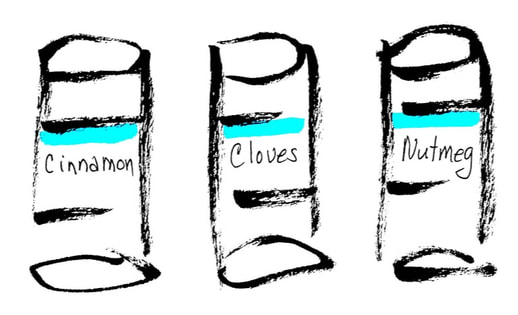 What do we mean by "spicy"? Think about the cache of spices in your kitchen. What do we mean by "spicy"? Think about the cache of spices in your kitchen. For the 2020 harvest, I purchased Syrah grapes from Lucas & Lewellen’s Valley View Vineyard in the Santa Ynez Valley. Today’s tasting of this spicy, savory wine reveals violets, lavender, cured meat, pink and black peppercorns, cranberries, blueberries, fresh bay leaf, petrichor/wet earth, cloves, bramble, cheddar cheese, shiitake mushroom and young tobacco. Opaque and purple in color, the wine is dry with high acidity, velvety tannins, high alcohol, and a medium body. What pleases me the most about this wine is the intensity of the perfume and flavor. The fruit concentration and tannins, along with high acidity and alcohol, bode well for aging the wine. The alcohol in this youthful and developing wine is a touch more pronounced than I would like, but this is common for a wine hailing from a warm region and from this variety. Though the alcohol level of a bottled wine does not change, I am hoping that time will mellow out the Syrah's overall balance. It is a vibrant wine that can use some taming. Syrah is one of several grapes that fall under the spicy category. Before we get too far ahead of ourselves, let’s examine what is meant when someone says a wine is “spicy.” Think about the cache of spices in your kitchen: cinnamon, cloves, pepper, nutmeg, anise, ginger, and cardamom being examples. You can actually smell and taste the natural chemical compounds of these spices not only when you reach into your spice cabinet but also when you drink a glass of wine. All fruits and plants, including grapes, draw from a common set of possible earthly elements, so it is no surprise that they share some chemical compounds. You don’t have to be an organic chemist to appreciate the excitement of detecting white pepper in your clam chowder as well as in your Grüner Veltliner. There are a great number of wines that bring spicy elements to the wine tasting experience. The next time you enjoy a Mourvèdre or Syrah from the Southern Rhone, consider “cola” as a possible spicy descriptor. Just knowing that such a flavor could occur opens our mind to the possibility of finding it in our wine. If you happen to smell cola’s bittersweet, sour, and spicy elements in your wine, give cola a shoutout. Do you smell cumin in your glass of wine? If so, this spice is sometimes found in cool-climate Pinot Noirs and in orange wines. Orange wines are white wines that are vinified in the same manner as red wines and are also described as skin-contact wines. “Baking spices” is a catchall term used for wines that exhibit a combination of spices common in pies and coffee cakes: ginger, cardamom, clove, nutmeg and coriander, to name a few. Stay open to the prospect of cinnamon aromas when you drink your next oaky Chardonnay or a Gewürztraminer or red wines made with Nebbiolo or Barbara grapes. Oak aging may contribute the aromas of cedar, cloves, sandalwood or vanilla. Viognier and Assyrtiko often carry the scent of ginger. Speaking of ginger and any flower, spice or fruit you detect in a wine, think about the evolution of the scent and its condition. Is the ginger fresh or stale? Candied? Dried? Is the pepper white, pink or black? Is the vanilla powerful as from a fresh pod or more like a diluted, low-cost extract? Is the star anise that you find in your California Zinfandel fresh and vibrant or aged and desiccated?  Every wine taster, from beginner to professional, is confused and intimidated at times when trying to sniff out specific spices and other flavors. Every wine taster, from beginner to professional, is confused and intimidated at times when trying to sniff out specific spices and other flavors. When professionals get together for a blind tasting, one goal is to identify the chemical compounds of specific fruits, flowers, spices, herbs, nuts and so on in the wine and to do so in vivid detail. It helps to visualize the spice you are naming but practical experience in the field is your best friend when it comes to identifying the universe of aromas found in wine. Many professionals hone this skill by smelling herbs and fruits from the farmers market. Follow their lead by memorizing the taste and smell of marmalade and marzipan over breakfast or dessert. Pay attention to the aromas of everything from leather to tobacco to smoke and wet soil. When it is time to bake, breathe in and taste the spices called for in the recipe. Ambitious wine tasters become cheese aficionados as well so they can identify specific cheese aromas in a blind wine tasting situation. Instead of identifying “cheese” in a wine, the knowledgeable taster may say “smoked Pecorino cheese” as one of several flavors identified. A study of the different types of mushrooms helps identify not only “mushroom” as an aroma but, more specifically, the type of mushroom, such as Cremini or Trumpet Royale. Tasters may invest time in understanding the different types of tea so they are able to distinguish white tea from black or green tea aromas in wine. They strive to understand the nuances of coffee and the different types and quality of chocolate. Nuts can also be a flavor, especially in deliberately oxidized wines such as Oloroso Sherry. Get to know the difference between walnuts, almonds, pecans, cashews, pistachios, hazelnuts and other types. Clearly, cooks and bakers have an edge when it comes to identifying spices and other aromas. While wine tasting may appear to be a niche interest, it actually encourages us to be rather curious about a range of gourmet topics, don’t you think? Essential oil kits with scents of truffle, pepper, chocolate, saffron, raspberry, green pepper and many other aromas are available to students of wine to help them with their identification skills. If you purchase such a kit, you will likely be offered an add-on wine faults kit to assist you in knowing exactly what is wrong like cork taint, reduction, volatile acidity and Brettanomyces. Such kits are not inexpensive but are an option for sharpening your blind tasting skills. Many professionals do not feel these kits are necessary; moreover, it is fun and easy to create your own aroma kit. Just fill a number of small bottles or vials with substances like pepper, star anise and other spices. Use stickers to hide the contents and assign a random three-digit number to each bottle. Note the numbers and their contents on a separate answer key. If you run with a group that is into novel experiences, bring your kit and ask each person to identify the aroma in each vial. Give the winner a bottle of wine. Now that’s a party game. You don’t have to be an organic chemist to appreciate the excitement of detecting white pepper in your clam chowder as well as in your Grüner Veltliner. When a client tells me she likes spicy wines, I have many choices at my disposal. The majority of fine red wines spend time in oak prior to bottling and that in itself is a common reason for finding spice in your wine. Some white wines also see time in oak. Or, spice can originate from the grape itself. When grapes are raw, most of their aroma molecules are bound up with sugar so you cannot detect spice. Place those grapes into alcoholic fermentation and the wine’s volatile flavor compounds are released, lifting the scent of spices to our nose. Fermentation in itself causes interactions between compounds that are highly complex and still being understood. In the case of my 2020 Syrah, I attribute the spiciness to the grapes because I did not use oak at any time in the production of the wine. One spice aroma in the Syrah, pepper, originates from a compound in the grape’s skin known as rotundone. This is the same compound found in black peppercorns. Grüner Veltliner, the most important indigenous grape of Austria, also has rotundone as part of its makeup and exudes pepper qualities. Some grapes are naturally prone to evolve into a spicy wine, like my Syrah. Other spicy flavors, such as the vanilla, butterscotch and coconut you might perceive, make their way into wine due to time spent in a cask. French oak is a popular choice for winemakers, offering subtle spiciness along with notes of cedar, hazelnut and smoke. American oak has a bolder presence, with a focus on coconut, vanilla and cinnamon. French oak is understood to impart a more silky texture to wine while American oak offers creaminess. The interplay of oxygen that occurs in both French and American oak gives the wine a rounder, more full-bodied texture than wines that do not see oak. So oak affects not only the flavor but also the texture of wine. New barrels exert a stronger flavor influence on wine than barrels that have been used more than once. When it is time for blending, a vintner may combine wine that spent time in new oak with wine that has slept in older casks, resulting in a wine that has partial new oak influence. New oak is expensive and expressive, so it is common for winemakers to use a combination of new and old oak in the development of a particular wine for both practical and aesthetic reasons. The smaller the cask, the more influence it will have on the wine because it has more physical contact with the wine than a larger cask. Barrels are toasted to various degrees with fire. A lighter toasting will have a more subtle effect on the wine as opposed to a barrel that has been toasted for a longer period of time. The longer the wine sits in a barrel, the more the barrel will impose its signature on the wine, affecting both the flavors and the texture of the wine.  Tasters may invest time in understanding the different types of tea so they are able to distinguish white tea from black or green tea aromas in wine. Tasters may invest time in understanding the different types of tea so they are able to distinguish white tea from black or green tea aromas in wine. From my own experience in winemaking with both commercial and wild yeasts, I can tell you that yeast selection has an influence on spiciness. Winemakers shop for commercial yeasts to be used during fermentation based on the characteristics they hope to achieve with their wine. Or, they can rely on the ambient yeast population in the vineyard, atmosphere and cellar to shape the development of the wine. Climate has a hand in spice development, along with vineyard selection, and when the grapes are picked in the vineyard. When spiciness is quite noticeable in a wine, a drinker will sometimes ask me whether the winemaker added spices while working with the wine in the cellar. In traditional winemaking, the answer is no. Wine science is always evolving, but it is thought that there are over one-thousand possible aroma compounds in wine. Every wine taster, from beginner to professional, is confused and intimidated at times when trying to sniff out specific spices and other flavors. There is so much going on in the glass. I personally find it easier to identify the characteristics that stand out the most in a wine, then put down the glass. I then go back to pick up additional aromas that I may have missed the first time. So basically, I go from the “loudest” scents to the “softest.” Typically, I run through the traditional wine tasting grid so I do not leave out an important observation such as the alcohol level or the length of the finish. In some cases, spice aromas jump out immediately. Take a few sniffs and allow yourself to visualize what you are smelling, then write down your impressions. While we all have lists of spices, fruits, herbs and other possible aromas to refer to, I find it more satisfying to treat each wine as an individual. I sniff the wine and ask myself, “What is this wine telling me?” Sometimes the answer has nothing to do with food, and it can be confusing or even shocking. What if you smell blood or copper or pee? Say what you smell aloud or write it down, even if you cannot believe your nose. I smelled pepper in a Pinot Noir this week even though it is a scent usually associated with the Syrah. If you are like me, you will be thrilled to find that other tasters have similar notes when you look up the wine later on the internet. Comparing your notes afterward with those of savvy tasters can help you, at the very least, gauge whether your observations are on track or, at best, confirm your prowess, leading to increased confidence. One note on housekeeping: temperature has a great impact on your wine’s expressiveness. If your wine is too cold, the spice and other aromas may be locked up until the wine warms to room temperature. When a wine is cold, I notice the structure of the wine, such as the tannins, alcohol, or acidity, more than the fruit. Once the wine warms, the fruit bursts forward and can change the overall perception of the wine. In general, I pull my reds from the fridge one hour prior to tasting and the whites half an hour prior. For fun, try tasting a wine cold from the fridge, then go back thirty to sixty minutes later to identify the spices and other flavors. The difference will astound you. In some cases, you will not believe you are drinking from the same bottle. This happened with my 2020 Syrah; the difference was startling. Whites: Assyrtiko Bourboulenc Chenin Blanc (South Africa) Coda di Volpe Cserszegi Füszeres Gewürztraminer Grüner Veltliner Muscat Blanc/Moscato Traminette Viognier Reds: Aglianico Barbera Blaufränkisch/Lemberger Bobal/Bovale Carménère Carignan/Cariñena/Mazuelo Chambourcin Cinsaut/Cinsault Dornfelder Frappato Fumin Gamaret Graciano Grenache/Garnacha Malbec Merlot Mondeuse Noire Montepulciano Mourvèdre/Mataro/Monastrell Nebbiolo Nerello Mascalese Nero d’Avola Petite Sirah Petit Verdot Pinot Noir Primitivo/Zinfandel Refosco (Colli Orientali) Ruchè Sangiovese Syrah/Shiraz Tannat Tempranillo Teroldego Trousseau/Bastardo Primitivo/Zinfandel This is one in a series of Grape Detective blogs featuring the attributes of wine and how your love for a specific wine grape may lead you to discover new grapes with similar characteristics. The focus of the list is grape variety and does not include blends, wine regions, or styles.
0 Comments
 Louis Pasteur felt that wine was "the most healthful and hygienic of beverages." Louis Pasteur felt that wine was "the most healthful and hygienic of beverages." Every once in awhile, I get a client who wants to purchase a wine for medicinal or health purposes. “I need something to help me get a good night’s sleep,” says one. “I want to drink wine because it is healthier than the Scotch and bourbon I normally drink,” says another. “Can you help me find something that will turn off my thoughts so I can chill out after work?” asks yet another. Almost always, the person requesting help adopts a serious tone, one that might be used when asking for a remedy from a medical doctor. At this point, I visualize myself wearing scrubs, a stethoscope, a lab coat, and comfortable shoes. Recalling my theater days from college, I go deep, utilizing the Stanislavski method of acting. I mirror the client’s serious demeanor. This a delicate situation because, while I want to deliver on the clients’ requests, I also feel the compelling need to inform them about wine’s role in relation to health and specifically the malady they hope to cure. As Doctor Wine, I simply cannot, in all good consciousness, simply recommend a bottle or two and send my clients on their way. To do anything less than compassionately explain how wine will affect my patients, I mean clients, and what they can expect, is a travesty to my commitment to the Hippocratic oath. Please, on the cellar stage, I am an artist. Wine and alcohol in general have been appreciated for their medicinal properties since ancient times to cure everything from the plague to the common cold to poisoning and mental disease. Basically, any ailment you can imagine has been addressed by physicians, including Hippocrates, with a wine remedy. Records exist on such medical treatments in ancient Egypt, Mesopotamia, China and most civilizations. The Romans and Greeks in particular have a long history of appreciating the curative value of wine. Pliny the Elder was a leader in scientific and medical theories until the middle ages. He believed wholeheartedly in wine as medicine and became known for his quotes, “In vino sanitas” (in wine there is health) and, “In vino veritas” (in wine there is truth). While anything in excess can be detrimental to your health, I am not alone in valuing the magic that happens when you uncork a bottle of wine in good company. Wine, like tea and coffee, encourages us to slow down and have a good conversation with family and friends, something I find satisfying if not therapeutic. Civilizations intent on treatment not only drank wine but also applied it to their wounds. They were on the right track, because wine is antiseptic and antimicrobial, contributing to the healing of wounds. Alcohol is a disinfectant, and the tannins in wine, along with other compounds, actually form an environment that is conducive to healing physical injuries. It is common knowledge that alcohol has been used throughout history as a safe alternative to polluted and infected water. The father of pasteurization, Louis Pasteur, felt that wine was “the most healthful and hygienic of beverages.” Sometimes civilizations added herbs or bitters to wine as they built impressive drinks to combat what ailed them, a tradition that continues to this day in the form of digestifs such as sweet vermouth, an aromatized wine with barks, herbs, spices, flowers and other botanicals. In Medieval Europe, monks provided health care to their communities. Many orders had their own proprietary recipes for wine-based medicine. In the twentieth century, what is known as the “French paradox” came into vogue, when an article by Professor Serge Renaud revealed that the French, a culture notorious for producing and drinking wine, had a lower rate of coronary heart disease than Americans despite consuming a diet high in fat. While no research has proven that wine is responsible for the French paradox, science is demonstrating that the tannins, antioxidants and flavonoids in wine can contribute to good health, assuming the proper moderation. These nutrients can also be found in berries and grapes in their raw, unprocessed state. As a wine lover, I’m going for the fermented version when dinner hour rolls around. 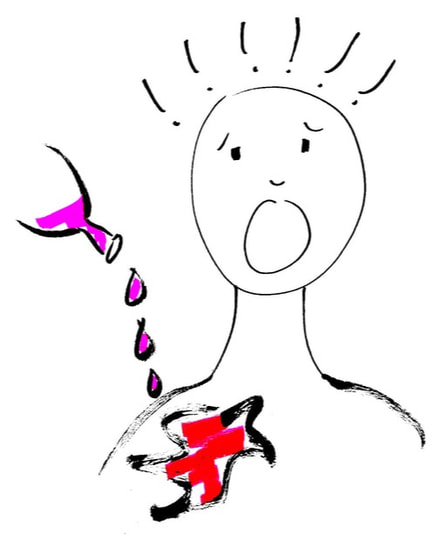 Civilizations intent on treatment not only drank wine but also applied it to their wounds. Civilizations intent on treatment not only drank wine but also applied it to their wounds. For the client telling me, “I need a wine that will help me sleep,” we scan the wineshop aisles for candidate bottles while I explain, like a little bird on the shoulder, that drinking wine will, in fact, be at odds with the goal of getting a good night’s sleep. As we consider this bottle or that one, we discuss which wines might work for the nocturnal need that is being addressed. The client pretty much ignores the facts that I am sharing as to what will actually happen when consuming wine before bed. Yes, the wine may cause my client to fall asleep sooner than usual, but wine, in any appreciable quantity, needs to be processed by the body before a good night’s sleep is possible. The client will find himself waking up during the night needing to relieve himself. Feeling parched, he will reach for a glass of water because alcohol is a diuretic. Alcohol dehydrates you by removing fluids from your blood via your renal system, including your bladder. Dehydration is a key cause of headaches and general malaise experienced by wine drinkers the morning after a party. It will take about one hour per unit of alcohol to exit the drinker’s system (a unit is about one small glass of wine). Then, and only then, will my client experience a blissful state of sleep. After this back-and-forth exchange, the client and I come to a consensus on a couple of bottles to “solve” the sleeping problem and everybody is happy. The client has his elixirs and I have sold wine while providing pertinent information not only about the attributes of the wine but also on the science associated with drinking so my client can make an educated decision. By the way, clients always buy the wine, though they may modify their choices based on what I explain as to the workings of wine and the body. For the client who wants to switch from spirits to wine for the purpose of lowering consumption of alcohol by volume, I look for similar attributes between the beverages. If the client likes brown spirits such as Scotch whiskey or bourbon, I might suggest Oloroso, a full-flavored, full-bodied fortified Sherry that sports a dark color and has a dry finish with an ABV of about twenty percent. Thinking about something chewy and substantial like Scotch, I might also offer full-bodied wines with ample tannins such as Touriga Nacional, Cabernet Sauvignon or Syrah, all with ABVs of around fourteen or fifteen percent. While those ABVs are considered high in the world of wine, they are well below the minimum forty percent or so found in Scotch or bourbon. If the client wants a white wine, I direct them to oak-aged, full-bodied whites in varieties like Grenache Blanc, Chardonnay and Marsanne. On the other hand, if the client drinks clear spirits such as Vodka, we look at white wines such as a lean and dry Chenin Blanc, Albariño or Verdicchio. Like Vodka, these wines are usually light-bodied, light in color, and crisp. If the client enjoys a flavored Vodka or Aquavit, I might suggest a grassy Sauvignon Blanc or a dry Vermouth. Crisp rosés would also work for Vodka drinkers, as might light-bodied reds like Frappato, Zinfandel and Pinot Noir. Clients always buy the wine, though they may modify their choices based on what I explain as to the workings of wine and the body. For the client who wants to calm her thoughts and unwind after work, which is most of us, we discuss the types of wines and other beverages she enjoys. I tailor my suggestions according to her taste profile. Since I see myself in a lab coat, I might throw in additional suggestions like meditation, massage, and more time socializing with friends and family to promote stress relief and relaxation. If I spot the opportunity, I recommend drinking slowly and accompanying the wine with plenty of water and a delicious meal to combat dehydration, inebriation and sleeplessness. For the purpose of this list, we are calling out the extremes of high alcohol and low alcohol varieties, not medium alcohol varieties. What is considered high alcohol? Fourteen percent or higher alcohol by volume is high. Medium alcohol is eleven to thirteen point nine percent. Low alcohol is anything below eleven percent. The varieties listed below do not necessarily adhere strictly to these numbers but are generally considered to fit neatly within the categories. The grapes listed as high alcohol are naturally higher in sugar than other grape varieties. During the wine-making process, sugar is converted primarily into alcohol, carbon dioxide and glycerol. Grapes with a low sugar content appear on the low-alcohol list. In the vineyard, climate affects the level of alcohol. Hot-climate wine regions encourage the ripening of the grapes, thus driving up the sugar levels and, through fermentation, the alcohol. In moderate climates, grapes enjoy longer hang time on the vine, building up sugars and flavor. In cool climates, grapes struggle to ripen and, regardless of variety, will have less sugar. A bottle of Chardonnay from California’s warm Napa Valley will generally have a higher alcohol level than a cool-climate bottle from Chablis, France. 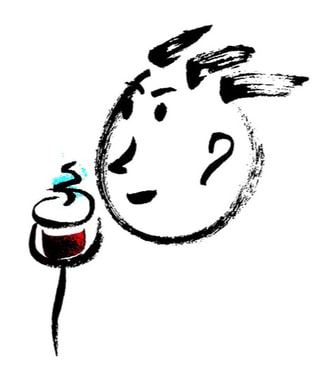 It is possible to detect alcohol heat on the nose. It is possible to detect alcohol heat on the nose. If a grape is high in sugar, it does not necessarily mean the wine will be sweet. If the yeast consume and convert the sugars to alcohol, the finished wine is dry. However, high alcohol wines give us the perception of sweetness on the palate and are more full-bodied than low-alcohol wines. If the alcohol level is too high, which can happen easily in warm vintages and especially in warm regions, the winemaker has several options to lower the ABV such as adding water or blending with lower-alcohol wine. Driving the level of alcohol starts not only with grape selection but in the vineyard. To avoid an overly alcoholic wine, the vintner may ask the vineyard manager to harvest the grapes early, before they get too ripe and full of sugar. The downside of early picking is that flavor compounds and tannins may not get the chance to fully develop. Many decisions come into play, from the vineyard to the cellar to aging, bottling and storage when it comes to making a high-quality, well-balanced wine. In cool climates where ripening is a challenge, vintners may add sugar before or during fermentation. The sugar does not sweeten the wine. The intent is to provide additional “food” for the yeast to process. The goals: higher alcohol, mouthfeel enhancement, and a balancing out of the wine’s acidity. Adding sugar, known as chaptalization, is highly controversial and illegal in several warm wine regions such as California, Italy, Argentina and South Africa. The practice is allowed in some cool regions in Germany, Austria, France, and Oregon, to name a few. The practice is essential for producing the base wines of Champagne, where the grapes must be harvested with pronounced acidity. Later in the process, Champagne producers may add a sugar-wine solution just prior to corking, a practice known as dosage, which may add sweetness to the finished wine. Chaptalization is regulated in one way or another in many wine regions. Incidentally, producers around the world are usually taxed according to the wine’s alcohol level. The higher the range of alcohol, the more taxes they are usually asked to pay by taxing authorities. The stated alcohol level on the bottle may differ from what is actually in the bottle, often between one and two percent. If the taxing authority tests the wine and finds it to differ significantly from what is stated on the bottle, the producer faces fines or penalties. Let’s talk a bit about how the alcohol level is experienced. On the nose, you do not actually smell alcohol but there are telltale signs that may give you clues as to the level of alcohol. For instance, it is possible to detect alcohol heat on the nose. Also, if the wine smells jammy or like raisins, the wine may have a high level of alcohol. On the mouth, alcohol is tasteless, so again we are looking for clues to help determine the level of alcohol. High alcohol wines may taste of jammy, ripe fruit and have lower acidity. They are more full-bodied with a rich character and perceived sweetness, even though they finish dry. High alcohol wines, once ingested, may give you heat in the throat, mouth, nose and possibly the chest. Low alcohol wines are generally tart and lean, with high acidity and a green or underripe fruit and herbal character. High-Alcohol Varieties Whites: Assyrtiko Chardonnay (Australia, California, Chile) Friulano Gewürztraminer Godello Kerner Marsanne Pino Blanc Roussanne Sémillon/Semillon Viognier Reds: Cabernet Sauvignon Carménère Garnacha/Grenache Liatiko Limniona Malbec Merlot Mourvèdre/Mataro/Monastrell Negroamaro Nero d’Avola Petite Sirah Petit Verdot Pinotage Primitivo/Zinfandel Ruchè Schiava Shiraz (Australia) Susumaniello Tannat Touriga Nacional Trousseau/Bastardo Low-Alcohol Varieties Whites: Albariño Aligoté Chasselas Dafni Grüner Veltliner Loureiro Melon de Bourgogne (Muscadet) Moschofilero Muscat Blanc/Moscato Pinot Grigio/Pinot Gris Riesling (Mosel) Sauvignon Blanc Reds: Bobal/Bovale Cinsaut/Cinsault Corvina Counoise Frappato Gamay (Beaujolais) Pinot Noir (Burgundy) Valdiguié This is one in a series of Grape Detective blogs featuring the attributes of wine and how your love for a specific wine grape may lead you to discover new grapes with similar characteristics. The focus of the list is grape variety and does not include blends, wine regions, or styles. 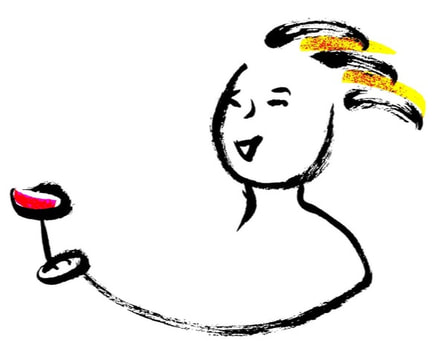 The winemaker tastes the wine in each barrel to follow its unique characteristics. The winemaker tastes the wine in each barrel to follow its unique characteristics. When my mouth waters for wines with oak characteristics, I might first think of red Bordeaux variety grapes such as Cabernet Sauvignon or Carménère because they are traditionally aged in oak, whether as blends (customary) or single variety offerings (gaining in popularity). In discussing oak aging, we often think of reds first, but whites are also part of the picture. Just yesterday I ordered a R de Rieussec 2017 Bordeaux that is roughly half Sémillon (a grape that fascinates me) and half Sauvignon Blanc (also fascinating, but for different reasons). This wine is produced as a dry white in a sub-region of Sauterns that neighbors Château d’Yquem, a sweet white wine producer in a league of its own. If you you appreciate the effects of oak in wine, you are not alone. Many of the world’s fine wines are aged in casks, giving the wines added complexity, richness, flavor and body. Oak imparts wonderful flavor compounds such as vanilla, spices, caramel, and smokiness. The winemakers of Burgundy are known for pioneering techniques to shape the flavors and richness of Chardonnay, including the use of old barrels, in both fermentation and aging. In addition to barrels, both whites and reds can be aged in stainless steel, concrete, amphoras, and other vessels, depending upon the choices of the winemaker. The R de Rieussec was barrel aged, and I can’t wait to receive the delivery at my doorstep in a few days. Most white wines around the world are fermented in stainless steel tanks, giving the maker control over temperature, oxygen ingress and egress, and other elements of winemaking. Stainless steel tanks are a safe bet for the fermentation of whites. However, some vintners choose to ferment a portion of their white wine in oak barrels, like the making of the wine I just ordered. Twenty percent of the wine is fermented in barrels while the balance is directed to large vats for fermentation. Eventually, the barrel-fermented wine is blended with the batch from the large vats. The winemaker tastes the wine in each barrel to follow its unique characteristics, then decides how much from that barrel will be blended into the whole. This process allows for quite a bit of creativity in the final outcome of the wine. Fermentation in new oak provides expressive flavor and noticeable texture to white wine. If the winemaker ferments in previously used or old, neutral barrels, mostly the texture, rather than the flavor, will be affected. Red wines require hands-on activities during fermentation to break up the cap of pulp and skins that build up on the surface of the wine. Techniques such as “punching down” ensure that this thick matter is redistributed into the wine so that the color, flavors and tannins will be properly extracted. The intervention that red wine requires makes it practical to use large vessels rather than wine barrels for fermentation. When I ferment wine at home, I gently push down on the pulp and skins and stir them into the wine. This stirring helps to cool the wine when fermentation is intense and the temperatures rises. Part of my mothering of the wine is to monitor the temperature at least twice daily, and I keep dry ice on hand to cool the wine if necessary. If the fermentation temperature gets too hot, the health of the yeast is at risk and the warmth may attract undesirable organisms. The result can be wine with stewed fruit flavors and muted aromatics . . . wine that is a disappointing shadow of what it could have been. If the fermentation temperature is too low, the yeast can go dormant and stop working. Nobody likes a stuck fermentation. When that happens, you have to figure out how to wake up the yeast so that fermentation can continue until the wine is dry or deal with an end product that is undeveloped and sweeter than planned. Since sweet wines are not as popular in the market as in the past, most makers do everything possible to nurture the yeast throughout fermentation to ensure a dry finish. During winemaking with grapes, I take sugar readings, taste the wine, examine the skins, seeds, pulp and liquid throughout the fermentation. In this manner, I develop an intimate relationship with the wine, as do many winemakers. Driving the fermentation is my favorite part of homebrewing. Perhaps car lovers feel this love when they take an excursion in a nifty car, especially a stick shift, where you effectively become a part of the machinery that enables the drive. 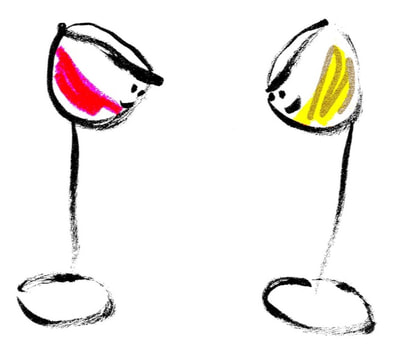 As wines age, reds lose color while whites grow darker. As wines age, reds lose color while whites grow darker. I once incorporated maple syrup with the juice from apples to create what is known as an acer cider. If you have ever tasted the juice of freshly pressed apples, you know that it is very sweet. The maple syrup I added introduced additional sugar to the mix, overwhelming the yeast and the fermentation stalled after a few days. I tried adding more yeast in hopes of restarting the action but it became clear that the yeast could not survive in that environment. There was more sugar there than the yeast could process. Note to self: use less maple syrup the next time. Luckily it was a small test batch. I considered throwing out the acer cider, but then remembered reading about an ancient civilization that fermented wine to about four percent then fortified it with spirits and botanicals. (Fortification is the addition of a distilled spirit, often brandy, to a wine either during or after fermentation.) I decided to give this approach a try since my acer cider had fermented to four percent. The botanicals and alcohol balanced out the sweetness of the cider and stabilized it, and my dinner guests enjoyed it as an after-dinner drink. It is very helpful to continuously learn from others, including ancient civilizations, when it is time for problem-solving. Speaking about oak, my mind also jumps to Spain, where oak aging is central to the production of that country’s signature grape, Tempranillo. I might also think about an obscure but fascinating wine region, such as the Jura in eastern France, where the wine is matured in oak under a veil of yeast to create the exotic vin jaune, one of the world’s most intriguing and rare wines. Vin jaune is a dry wine produced in a manner that is similar to Spain’s Fino Sherry, which is also dry and complex, relying heavily on yeast for protection and development. Vin jaune is produced from Savagnin grapes, while Fino Sherry is made with Palomino Fino grapes. Another difference between the two is that Fino Sherry is a fortified wine while Vin jaune is not. Of course, when it comes to oak aging, there is also Italy to think about. Barolo wines, made from the Nebbiolo grape, need time in oak to calm their tannins and aid in their evolution. Really, it is difficult to name even one winemaking country that does not use oak to mature their wines gracefully. The list below spotlights the grapes that makers might look to first when considering the use of oak. During winemaking with grapes, I take sugar readings, taste the wine, examine the skins, seeds, pulp and liquid throughout the fermentation. In this manner, I develop an intimate relationship with the wine, as do many winemakers. Most grape varieties do well with oak aging, except those that are sensitive to the effects of oxygen. In those cases, the wines will likely be aged in steel or concrete tanks, or the winemaker will blend these delicate wines with other heartier grape varieties before placing them in a barrel. Some varieties have distinctive aromas that the winemaker wants to accentuate, as is common with Grüner Veltliner, Sauvignon Blanc and Riesling. In this case, the goal is to preserve fruit purity with no oak flavors and other influences getting in the way. The decision on whether or not to use oak is driven by the winemaker’s intent and creativity, customs, wine laws, budget, and other factors. French and American oak barrels are often favored by winemakers, though oak can be sourced from many countries. Incidentally, barrels can be made from other types of wood, such as chestnut or acacia, but oak is much more common. France’s tight-grained oak delivers subtle spice, cedar, hazelnut and smoky notes along with silky textures. The comparatively looser-grained American oak is more forthright, boldly contributing vanilla, coconut and cinnamon flavors along with a creamy texture. Older trees tend to have the tightest grains regardless of location. For some regions, the choice of oak has origins in history and politics rather than organoleptic preferences. The Spanish have a long history of disagreements and consequently wars with France. From the sixteenth to the nineteenth century, the Spanish Empire owned some of what is now American land, including Florida, and this access to North America provided a ready resource for sourcing oak without having to deal with the French. To be made into casks, oak needs to be air-dried, seasoned and toasted over fire. The amount of toasting dramatically affects the finished wine’s flavor. The higher the toast, the more oak influence you will find in the wine. New wine barrels release more intense flavors than used barrels. With each use of the barrel, the flavors imparted by the wood become less pronounced in the wine. There is a trend toward a more subtle use of oak as wine drinkers and critics increasingly favor subtlety and nuance in fine wine. Moreover, wines with subtle oak influences are more easily accessible to drinkers and are ready to drink now, in contrast to heavily oaked wines that require time to calm down the intensity. Casks permit the slow ingress of oxygen, smoothing it out and aiding in the wine’s development. Some of the wine is lost to evaporation when it is being aged; this is known as the “angel’s share.” 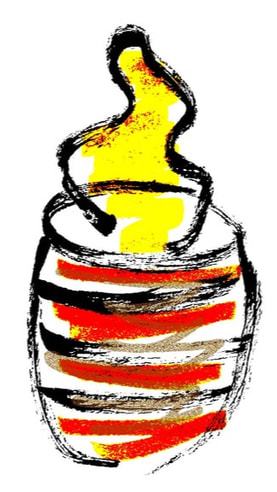 The amount of the casks's toasting dramatically affects the finished wine's flavor. The amount of the casks's toasting dramatically affects the finished wine's flavor. Each cask holds several gallons of wine inside its staves (planks), further concentrating the wine for more pronounced flavors. Small casks come into more contact with wine than large casks and therefore take on oakier character. Oak vessels provide an ideal environment for the the natural chemical conversions that wine undergoes as it matures. Winemakers can add oak chips or staves to wine in lieu of using expensive barrels. These additions will add flavor but will not influence the texture of a wine as would a cask. The use of oak chips or staves or even oak powder is one way that mass producers make low-cost wines available to the public. The amount of time the wine spends in oak also affects the intensity of the wine’s flavors and textures. A fine red wine aged for two years in new oak will have characteristics that are very different from a fine red wine aged for ten years in new oak. As the two-year-old red ages, the tannins will smooth out. Primary fruit flavors will concentrate and evolve from fresh-fruit characteristics to those of dried fruit. Other flavors heretofore hidden by the bold fresh fruit come into their own over time. Tertiary flavors, those of maturation, can include mushroom, tobacco, forest floor and leather in reds. White tertiary flavors might be ginger, honey and cinnamon. The wine’s color will change, with reds losing color while whites grow darker. The spicy notes imparted into the wine from the cask will mellow. Wine evolves throughout its life cycle and the day you open the bottle, you capture the wine at a particular stage of development. That being said, the majority of wines are intended by the producers to be enjoyed upon release to the public. Whites: Chardonnay Friulano Godello Palomino Fino/Listán Blanco Pinot Blanc (Alsace) Savagnin Sémillon/Semillon Viognier Viura/Macabeo Reds: Aglianico Barbera Cabernet Franc Cabernet Sauvignon Carménère Dornfelder Garnacha/Grenache Graciano Malbec Merlot Mourvèdre/Mataro/Monastrell Nebbiolo Nero d’Avola Pignolo Pinotage Pinot Noir Petit Verdot Sagrantino Sangiovese Syrah/Shiraz Tannat Tempranillo Primitivo/Zinfandel This is one in a series of Grape Detective blogs featuring the attributes of wine and how your love for a specific wine grape may lead you to discover new grapes with similar characteristics. The focus of the list is grape variety and does not include blends, wine regions, or styles.  The more you salivate, the higher the acid level of the wine. The more you salivate, the higher the acid level of the wine. If you are handed a plate of sea bass that was pulled off the grill on a summer day, do you grace it with a splash or two of lemon juice? Refreshing, crisp acidity is a burst of excitement in your food and wine. Without acidity, wine would taste flabby and lifeless, as might that lovely sea bass. Acid contributes the tart, zippy, and/or sour flavors you experience in wine. The level can range from low to high, depending on the grape variety, growing conditions, climate, winemaking, and a host of other factors. Acid also performs a useful function: it inhibits the growth of bacteria and unsavory microbes. In other words, it acts as a preservative. If you enjoy the classic Italian dish, beef carpaccio, you understand the role of lemon juice or balsamic vinaigrette, aka acids, to protect the raw steak from bacteria and brighten up the flavor. Low-acid wines taste fuller in the mouth, giving you a soft, round, mellow experience. Wines with high acidity deliver a leaner, more bracing adventure, like taking a vigorous run in cool weather. Wines with high acidity can help improve the wine as it ages, while those with low acidity can cause the wine to lose vibrancy. That is why collectors look for medium to high acidity in the wines they plan to age (along with substantial tannins, alcohol, fruit concentration, and possibly sweetness). A low-acid wine has less protection from contamination so it is customarily drunk young. Sometimes low acid wines, with their sensitivity to oxidation, develop a hazy appearance, though this can be avoided by the winemaker with the addition of sulfur dioxide and/or filtering. Don’t restrict yourself to either low-acid or high-acid grape varieties; try them all. Many times I have made the mistake of thinking a wine did not have the right resumé only to be surprised and thrilled by the wine’s magnificence. In fact, I made the same mistake when a man who was a few years younger than me (wrong resumé) working at the same firm (double wrong resumé) dropped by my office to “chat” some years ago. That man later turned out to be my husband, Peter.  Wines with a low pH have high acidity while wines with a high pH have low acidity. Wines with a low pH have high acidity while wines with a high pH have low acidity. I am also guilty, in the past, of being reluctant to try a bottle of wine made from a low-acid grape varietal. I am a fan of medium- to high-acid wines, so how could wine made from a low-acid grape be a thrill? Once again, what actually happened differed from what I had expected. I often drink a Fino or Manzanilla Sherry as I prepare dinner. These are among the driest, least acidic wines in the world and they are made from the Palomino Fino grape. Sherry is an acquired taste, and over time, my love affair with Sherry has waxed to the point of full-on passion. (Peter knows this and is fine with it.) My experience with Sherry has turned me into an enthusiastic believer in wines made from low-acid grapes. Conversely, I have been sorely disappointed by wines with a resumé that should have led to an absolute knockout experience. Like some men I dated before meeting Peter. Some truly delicious wines, such as Sémillon, Grenache and Ruchè, are low-acid varieties. When working with low-acid grapes, the vintner can use varying techniques, such as picking the grapes early before the acidity drops too low or blending with high-acid grapes, to keep the wine fresh and satisfying. An example of this type of blending: the great white Bordeaux whites, where the high-acid Sauvignon Blanc is blended with the low-acid Sémillon to create world-class wines of bright acidity and depth of flavor. The high-acid Carignan grape is a perfect blending partner to Grenache which is a low-acid grape. We have a lot of preconceived notions about the wines we will or will not drink, and that’s why it is important to keep an open mind. This week I was in the mood to drink something Spanish, so I sampled a 2018 bottle of Rueda over the course of five days. (Yes, it was one bottle revisited in small amounts over the course of a workweek.) Rueda is Castilla y León’s oldest demarcated wine region, producing almost exclusively white wines composed of their star, the Verdejo grape, which is a crisp variety. Makers often include Sauvignon Blanc or Viura when it is a blend. This bottle’s list of attributes gave me no doubt that I would enjoy a rewarding experience. It was the flagship wine of the maker. The wine was produced from one-hundred percent Verdejo grown on “un-grafted, pre-Phylloxera vines that are over one-hundred years old.” The label waxed on about citrus flavors, a viscous mouthfeel and a mid-palate that is “full-bodied with racy acidity” as well as a “lingering finish.” I opened the bottle and found the wine to be a mere shadow of what I was expecting, not only due to the optimistic write-up but because I have enjoyed many remarkable Ruedas in the past. Right resumé, disappointing wine. Tartrate crystals or "wine diamonds" are not made of glass and do not affect the aroma, taste or quality of your wine. Rueda, incidentally, is Spain’s largest producer of white wine. There are many brisk and delicious bottles coming out of Rueda, with lemon, lime, peach and bayleaf characteristics at prices that don’t make you think twice. I was mollified to find that this particular wine woke up a bit in terms of flavor on the fifth day, and I was glad I had not added the bottle to my collection of cooking wines on the kitchen counter. When I move a bottle to the kitchen counter, it is the equivalent of subjecting the bottle to wearing a dunce cap while facing the wall. These are bottles that did not make the cut. A wine’s acidity starts in the vineyard and is affected by soil, climate, canopy management, and other factors. At the beginning of the growing cycle, unripe grapes are naturally acidic. This is mother nature’s way of making the berries unappealing to birds and mammals who may want to eat them. As the grapes ripen and their sugar content rises, their acidity level goes down. Mother nature is now ready to attract animals to the seeds; she counts on them to eat and then scatter the seeds for the proliferation of the species. Climate also influences the acidity of grapes. If you drink a wine with high acidity, it may have been grown in a cool climate or a region with cool nighttime temperatures. Grapes from cool climates tend to retain their acidity much better than those grown in warm climates. However, some grape varieties are naturally acidic no matter where they are planted, such as Chenin Blanc and Sauvignon Blanc. The strength or intensity of acidity in wine is measured on a pH scale. Wines with a low pH generally present with high acidity while wines with a high pH have low acidity. But you do not need a pH meter to determine if a wine has low, medium, or high acidity. Your mouth reacts instinctively to the acidity of a wine through salivation, which restores your natural acid balance. The more you salivate, the higher the acid level of the wine. This is your personal measure for what is known as total acidity or titratable acidity. When you initially sniff a wine, you may anticipate high acidity if you detect tart or under-ripe fruit. On the red wine side, you may be able to pick up some clues as to the level of acidity before taking a sip based on color. Red wines with high acidity tend to be a bright ruby color. Those that are on the low end of the acid scale can have a purple or blue hue. Low-acid wines may turn brownish because they are more sensitive to oxidation. 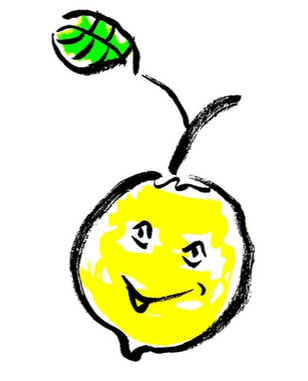 Refreshing, crisp acidity is a burst of excitement in your food and wine. Refreshing, crisp acidity is a burst of excitement in your food and wine. Producers of whites that are too acidic can use malolactic fermentation (MLF) to tone down the crispness. MLF converts harsh malic acid, the type you might recognize in green apples, to the more soft, silky lactic acids you get from the milk you drink. Almost all reds go through MLF, and this process helps stabilize the wines. You will not detect MLF’s dairy aromas in reds. Makers of whites can prevent or induce MLF, based on the style they wish to produce. In colder growing regions, winemakers count on MLF to help them soften the wines that are overly acidic due to under-ripening. In warm regions, winemakers fight low acidity caused by sunlight and warmth, so they might block MLF in an effort to retain as much acidity as possible. Some winemakers balance out high acidity in a wine by blending in a sweeter wine . Or, a high-acid wine’s fermentation can be halted to produce a sweet wine that will nicely balance the wine. This is an approach you will see in sweet German Rieslings, for example, no blending required. Foods that have sweetness, saltiness or fat often make good pairings with high-acid wines. On the other hand, if a wine’s level of acidity is low, the winemaker can add tartaric acid to the grape juice prior to or during fermentation. Tartaric acid is a natural component of grapes, so adding it to the grape must is generally accepted as one method of making up for low acidity. It is usually added in powdered form and derived from grapes. If tartaric acid is added after fermentation, it is usually to cover up a mistake made in the cellar. Tartaric is the most important type of acid found in wine, providing balance and aging potential. Sometimes tartaric acid, when chilled, forms a compound that is responsible for the small crystals that you may happen to notice when you open a bottle of wine. The crystals are known as tartrate crystals or "wine diamonds" and they are harmless. Tartrate crystals are not made of glass and do not affect the aroma, taste or quality of your wine, but they will never go away unless you filter them out with a muslin cloth or at least mitigate the situation by decanting your wine. Personally, I am not bothered by tartrate crystals but it is nice to understand what they are so you can set the record straight with friends who express concerns about them. Have fun comparing a crisp white to a low-acid white and do the same for reds. Or, conduct a blind tasting of crisp and low-acid wines with friends and offer prizes to those who can identify what differentiates the wines. Cheers! Crisp/Acidic Varieties Whites: Albana Albariño Aligoté Madeleine Angevine Assyrtiko Bourboulenc Carricante Chasselas Chenin Blanc Colombard Cortese Cserszegi Füszeres Dafni Dry Hungarian Furmint Falanghina Friulano Godello Graševina Greco Gros Manseng Grüner Veltliner La Crescent Loureiro Moschofilero Melon de Bourgogne (Muscadet) Petite Arvine Petit Manseng (Jurançon, Pacherenc) Picpoul de Pinet Prié Blanc Poulsard/Ploussard Riesling Robola Sauvignon Blanc Savagnin Silvaner/Sylvaner St. Laurent Timorasso Torrontés Trebbiano Spoletino Verdejo Verdicchio Vidal Xarel-lo Reds: Aglianico Baga Barbera Blaufränkisch/Lemberger Bobal/Bovale Bonarda/Douce Noir/Charbono Carignan/Cariñena/Mazuelo Chambourcin Corvina Counoise Freisa Frappato Fumin Gamay Graciano Lagrein Mondeuse Noire Nebbiolo Petite Sirah Plavina Refosco (Colli Orientali) Sangiovese Zweigelt Low Acid Varieties Whites: Bacchus Catarratto Coda di Volpe Gewürztraminer Marsanne Malvasia Bianca Müller-Thurgau Muscat Blanc/Moscato Palomino Fino/Listán Blanco Pinot Blanc Sémillon/Semillon Reds: Dolcetto Garnacha/Grenache Montepulciano Négrette Pinotage Ruchè Tempranillo This is one in a series of Grape Detective blogs featuring the attributes of wine and how your love for a specific wine grape may lead you to discover new grapes with similar characteristics. The focus of the list is grape variety and does not include blends, wine regions, or styles. 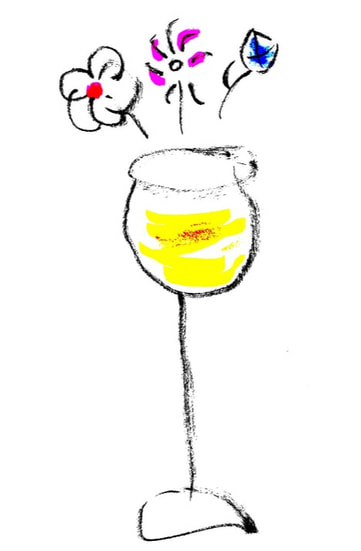 Bitterness plays a nice counterpart to balance out the aroma of flowers. Bitterness plays a nice counterpart to balance out the aroma of flowers. Once in awhile, you run across a white wine with a surprising mouthfeel or flavor, something that takes you aback and causes you to pay attention. Wines with phenolic bitterness may be among them. Certain grape varieties are known for producing wines that finish with a subtle and pleasant bitterness reminiscent of the sensation you get after eating a young almond or a grapefruit pith. This bitter aspect refreshes and dries out your mouth in preparation for the next drink. Phenolic bitterness causes polarities among drinkers as most people either love it or hate it. A difference of opinion over phenolic bitterness can occur between happily married couples who have developed a habit of sharing a bottle. Peter and I typically open a bottle with dinner, and the talk sometimes turns to a discussion of the wine that has been poured. I might ask, “What do you think of this Cabernet Franc?” To which he might respond, “Give me a minute,” and take an assessing drink. His answer: “There’s just not much there for me. It just doesn’t do it for me.” It’s a real head-scratcher when your partner does not share your zest for something you find completely scrumptious. For example, this very morning I got around to tasting a white plum that I had picked up at the farmers market on Sunday. It was so delicious that I felt I had to share it with Peter as part of our marital contract. I cut off a generous portion of the plum with my Japanese pairing knife and offered it to him as though I was the Eve to his Adam. Peter took a bite. To my surprise, his face took on a pained expression and he said, “It’s too sour!” To which I responded, “The tartness is the best part!” I understand intellectually that we are each entitled to our own opinion of what we like and don’t like, so I refrained from explaining that the tartness of the plum was balanced by the fruit’s sweetness and flavor elements. I took back from Peter what was left and consumed the balance of the plums, guilt-free. 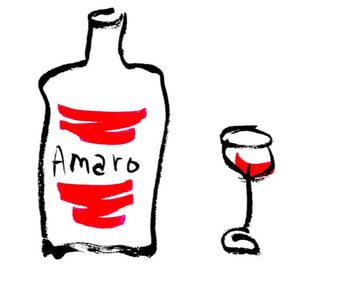 Italians are known for enjoying food and beverages with pleasantly bitter flavors. Italians are known for enjoying food and beverages with pleasantly bitter flavors. Italians are known for enjoying food and beverages with pleasantly bitter flavors. Think about radicchio, Tuscan kale, dandelion greens, Amaro, Negroni, and Fernet Branca. Bitterness is also an essential element in Indian cuisine. Chefs build recipes with ingredients like bitter gourd, neem leaves, and fenugreek seeds and leaves, to mention a few. Meanwhile, food writers and scientists alert us that bitterness is becoming less prominent in American food and drink, leading to a loss of dietary diversity and complexity. The long and short of it is, if you enjoy food and beverages that offer the interest of savory or bitter characteristics rather than strictly fruity and sweet, wines with phenolic bitterness may be your cup of tea. Just maybe not your drinking partner’s. Right now as we speak, I am enjoying a 2019 Maidenstoen Grüner Veltliner from Edna Valley, located in San Luis Obispo County, California. Not only am I enjoying the pleasingly bitter finish but also the wine’s rich, generous body. Grüner can also be made in a leaner, crisper style, but this maker chose a more opulent approach. Pale lemon in color, it has a somewhat cloudy or hazy appearance, alerting me that this wine was possibly not fined or filtered. While I admire the glorious beauty of a crystal clear wine or beer, this dirtier style often includes more than the usual helping of flavor compounds that might otherwise have been stripped away. Fining and filtering involves removing fine particles before bottling; it also stabilizes the beverage. The Grüner in front of me has a medium-intensity nose of peaches, lemon drops, lilies, banana, lychee, butter, smoky yellow cheese, almonds, vanilla, white pepper, and a surprisingly fresh and wonderful hint of raw peas soaking in water. It is a dry wine, and I am guessing that the alcohol is higher than its Austrian counterparts because we are talking about grapes that were grown under the warm California sun. Grüner originated in Austria, probably in Niederösterreich (lower Austria), and it is the country’s signature white wine grape. Looking at the label of this California-grown and produced wine, we are at fourteen percent alcohol by volume. Edna Valley has one of the longest growing seasons in California. Warm weather and longer hang time allow the grape to fully ripen in the vineyard and gain in sugar content, driving up the alcohol level. If you love the tannins in red wine, you may be intrigued to explore white wines with this type of texture. The majority of Austria’s Grüners fall somewhere between eleven point five to thirteen percent ABV, largely due to the country’s cool continental climate. Grapes grown in cool climates tend to have lower alcohol levels and higher acidity than those grown in warm areas. However, you can expect a Grüner to have a high level of acidity regardless of where it is grown and the same is true with the Chenin Blanc grape. Some varietals retain their hallmark characteristics regardless of where they are grown. In our Edna Valley tasting, the flavors of this Grüner glide along on a carriage of high tangy acidity, and it is no surprise. The lavish body and gracefully lingering bitter resolution have me thirsting for the next sip. My assessment: I am going to quickly pause this conversation to re-order this wine for my next delivery. Okay . . . sadly this wine is sold out, according to the online merchant, so it looks like I am not the only one looking to repeat the experience. If you love the tannins in red wine, you may be intrigued to explore white wines with this type of texture. Wines with phenolic bitterness lend themselves to astringency on the palate, similar to a red wine of somewhat low to moderate tannins. Notice that several varieties on the list are aromatic wines with conspicuous floral qualities on the nose. The bitterness plays a nice counterpoint to balance out the aroma of flowers. Using any white grape variety, a winemaker can coax a sensation or a mouthfeel that differs from most other whites. In this case, the winemaker would have several techniques at her disposal. One approach involves keeping the juice in contact with the skins. Normally, the juice from white wine is separated from the skins and other matter upon arriving at the winery to keep the taste pure and to avoid oxidation. In some cases, however, the winemaker is looking to achieve pronounced flavor intensity and texture from the grapes. Skin contact facilitates the extraction of phenolic compounds into the juice. When the skins, seeds and other grape materials are not separated from the juice until after fermentation, the white wine is being vinified just like red wine. Such wines are commonly referred to as “orange wines” or “skin-contact” whites. Not all orange wines are the color orange, but they are certainly darker than traditional pale whites. The deeper color is leached from the grape skins, seeds and perhaps the stems. Oxidation also plays an important role in color, and the orange wine process invites oxygen to make an appearance during skin contact, thereby darkening the wine.  Bitterness is becoming less prominent in American food and drink, leading to a loss of dietary diversity and complexity. Bitterness is becoming less prominent in American food and drink, leading to a loss of dietary diversity and complexity. Take your time exploring orange wines, which are often produced without additives in what makers describe as a “natural” style. I have found that orange wines vary considerably in terms of flavor and quality, with some being undrinkable and others, heavenly. Some producers in Spain, California, Portugal and other locations include partial skin contact to develop texture and complexity in their wines. They ferment the wine with its skins for a short time or as a small part of a blend with conventionally made whites. White wines made with what amounts to a cameo appearance with the skins are not considered orange wines. Yet another technique for increasing mouthfeel: leaving the wine to rest as it evolves in the barrel or tank. Most wine producers rack their wines (move them from one vessel to another) several times after fermentation, leaving behind the particles at the bottom of the vessel to clarify and help stabilize the wine before bottling. Many orange wine producers subscribe to a more hands-off approach. It is their philosophy to let the wine “make itself” with as little intervention as possible, so they only rack just prior to bottling. (Non-orange wine producers can also choose to minimize racking to give the wine more personality.) Some producers ferment or age their orange wines in amphoras (clay containers) to further coax earthy, funky flavors from the grapes. While the use of clay in winemaking may seem cutting edge, it is actually a practice that goes back to about six-thousand years ago, where it originated in what is now known as the country of Georgia. Other unusual encounters with whites may include techniques that many attribute to Burgundian winemakers to enhance the wine’s mouthfeel and flavor, often using the Chardonnay grape. These include barrel fermentation and/or aging, malolactic fermentation (sour malic acid is converted to milky lactic acids), and wine aged sur lie (kept in contact with spent yeast cells). Chardonnay is often manipulated into textured wines but is not regarded as having phenolic bitterness. Incidentally, if you are wondering whether white wines contain tannins, they do, but at very low concentrations, so tannins are not addressed when tasting white wine. While Peter and I may have disagreed on the tastiness of the white plum, we do agree that Grüner Veltliner is the cat’s meow. For this reason, and others beyond his good looks, he retains his position as my key drinking partner, which is also in accordance with our marital contract. By the way, the list below is somewhat controversial among wine professionals, as not all agree upon the varieties that display phenolic bitterness. This list is more wide-ranging than many, giving us more examples to explore. Many of these varieties are ideal candidates for producing unusual textures at the very least. You might have fun going through the list to decide for yourself whether each varietal lives up to its reputation for phenolic bitterness. Bear in mind that you should try several examples of each variety because sometimes winemakers choose to mask the grape’s natural phenolic compounds during the winemaking process. Varieties with Potential Phenolic Bitterness Albana Albariño Assyrtiko Chenin Blanc (Loire) Gewürztraminer Gros Manseng Grüner Veltliner Kisi Melon de Bourgogne (Muscadet) Muscat Blanc/Moscato Pinot Blanc Pinot Grigio/Pinot Gris Riesling Robola Torrontés Traminette Trebbiano Spoletino Vermentino/Rolle Viognier This is one in a series of Grape Detective blogs featuring the attributes of wine and how your love for a specific wine grape may lead you to discover new grapes with similar characteristics. The focus of the list is grape variety and does not include blends, wine regions, or styles.  The drier your mouth feels, the more tannic the wine. The drier your mouth feels, the more tannic the wine. Tannins, to me, are the absolute magic of red wine. They contribute longevity, color, flavor, body and overall textural richness. While I adore tannins, I am simultaneously and confusingly captivated by grape varieties that are known to be low in tannins, such as Grenache, Frappato and Gamay. Just when I think, “Ah, ha! I have finally discovered my Holy Grail of wine characteristics,” plenty of opposite examples have me re-thinking my earnest declarations. This leads me to believe that there are no hard-and-fast rules about what makes a wine great. Maybe instead of seeing a bottle of wine as possessing specific attributes that you either chase or run away from, it is more open-minded and adult to view each bottle as an individual whose secrets are yet to be revealed. But I digress, so let us explore the world of tannins and why they are a subject of fascination and delight for drinkers, scientists, and industry insiders. Tannins provide structure to a wine, just as your skeleton supports your body. Without tannins, red wine would be cloyingly sweet. That is why tannins are one important element of a wine’s balance, along with acidity, fruit concentration, sweetness, alcohol, and texture. You eat and drink tannins as a matter of course because they are present in coffee, tea, dark chocolate, walnuts, cranberries and other plant-based foods and beverages. Oak can also contribute tannins to a wine, especially new oak. Producers sometimes use additives such as oak powder to increase the perception of tannins; this practice is associated with large-scale, low-end wines. Seriously, can you see yourself drinking anything that contains oak powder? Tannins are responsible for the astringent, mouth-puckering sensation of dryness you get in the mouth when drinking wine. When a red wine with firm tannins enters your mouth, it binds to the proteins in your saliva and washes much of the saliva away, leaving your mouth with a feeling of dryness and astringency, even bitterness. To determine whether a wine is high or low in tannins (or something in-between), pause to consider how dry your mouth feels during and after a drink. The dryer your mouth feels, the more tannic the wine. When you drink a delicious wine that is generous with tannins, even while the wine is still in your mouth and yet to be swallowed, why hurry? Experience wine's aromas, flavors and sensations. Much of wine tasting is thoughtfully paying attention to what is in the glass and your mouth. Drink plenty of water between sips to help your body hydrate and to produce more lubricating saliva. Pace yourself. 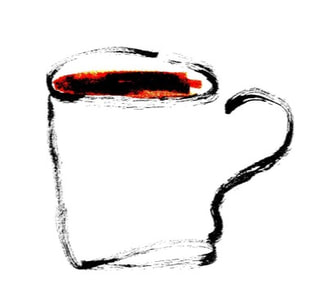 Tannins are present in coffee, tea, dark chocolate and other plant-based foods and beverages. Tannins are present in coffee, tea, dark chocolate and other plant-based foods and beverages. Those who are new to wine may find tannins especially challenging, even off-putting, and will find fruity or sweet wines to be much more acceptable. Eventually, however, many drinkers come to appreciate the complexity and added dimensions that tannins bring to the table. This phenomenon is similar to when you were a toddler, favoring sweets. As you grew into adulthood, your palate evolved and you began to accept and increasingly enjoy the bitterness you found in arugula, green tea, artichokes, dark chocolate, radicchio, grapefruit, beer and other food and drink, right? If you are what is known as a supertaster, experiencing foods and flavors more intensely than most people, you may find it hard to enjoy a wine generously endowed with tannins. Tannins are extracted from the grape’s skins and seeds (and sometimes the stems) when they are soaked along with the juice, before, during, and sometimes after fermentation. As red wines of high quality age, their tannins soften and interact with other elements in the wine to develop deep and complex flavors as well as a more soft and mellow mouthfeel. Aged fine wines are sometimes described as having “resolved tannins,” meaning that they have smoothed out and softened their astringency. You and I do the same thing, smooth out and soften as we age, don’t we? Wines harvested early, or in a cool vintage or location, are prone to have more aggressive tannins because the grapes have not had enough sunshine, warmth, and hang time to allow the tannins to reach full maturity. Wines harvested later, or in a warmer vintage or location, often have softer, more developed tannins. Some grape varieties have high tannins, some have low, and many have something in-between. The winemaker is tasked with understanding the tannins on offer and producing a beverage that is in balance with what nature has provided. Some grape varieties are prone to ripening unevenly on the vine, even within the same cluster, so quality producers pick only ripe grapes from the cluster, returning later for another pass at the ripe fruit. Zinfandel is an example of a grape variety that ripens unevenly. Tannins are more plentiful in grapes that have thick skins, for example, Nebbiolo. Thin-skinned grapes, such as Zinfandel, have fewer tannins. Under-ripe grapes have more tannins than ripe grapes. Nature purposefully keeps her grapes unappetizingly tannic and acidic until she is certain that the seeds are perfectly ripe and ready to be eaten and dispersed for the propagation of the species. Nature also works to woo us (along with birds and other animals) by producing luscious fruit, so she intensifies the flavor molecules in the grapes as ripening approaches. Seriously, can you see yourself drinking anything that contains oak powder? Managing tannins is an important aspect of red winemaking, and the protocol varies from vintage to vintage, winemaker to winemaker, and vineyard to vineyard. Tannins are highly complex in their makeup, behavior and development, and scientists have only begun to bring some of their many secrets to light. Without tannins, red wine would taste a lot like white wine, don’t you think? In fact, a producer can make white wine from red grapes through divorcing the grapes from their skins as quickly as possible after harvesting. However, it is impossible to make red wine from white grapes unless there is some sort of unconventional and off-putting intervention involved, such as adding food coloring. Tannins can be further described by their texture or mouthfeel. You might have heard a drinker describe tannins as “silky” or “grippy” or “sandy” or “green” or “loose-knit” or “fine-grained.” These are all descriptors that go beyond quantity to describe qualities. When you drink a red wine, think about not only the power or volume of the tannins, but also how you might describe the quality or texture of the tannins. “Firm,” “dense,” and “tightly-knit” attributes usually indicate a wine with tannins playing a key role in the wine, such as a Cabernet Sauvignon or Tannat. “Silky” or “polished” connote tannins that dance across the tongue and seemingly disappear, as with a Pinot Noir or Carménère. “Chewy” can mean tannins that coat your mouth to the point where you could practically masticate them, like a Syrah might. You might want to use terms like “harsh” or “aggressive” or “astringent” when describing a wine that is out of balance. This type of appreciation takes time and experience, so do not worry if apt descriptors do not leap from your lips when you evaluate a wine. Just be aware that these types of descriptions exist and are used by wine lovers to communicate their perceptions. This is no different than a baker comparing large-crystal sanding sugar for sprinkling atop cookies to the texture of everyday white granulated sugar. 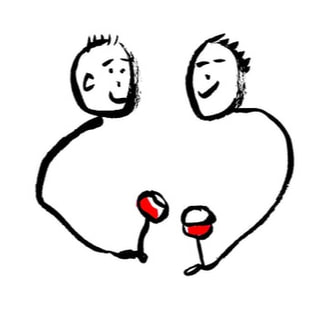 Many drinkers appreciate the complexity and added dimensions that tannins bring to the table. Many drinkers appreciate the complexity and added dimensions that tannins bring to the table. Just yesterday I decided to open a 2018 Catena Malbec from the Paraje Altamira appellation in Mendoza, Argentina. Between us, I have come to develop a specific affinity for the texture of Malbec tannins. I view Malbec’s grainy texture as a special treat, like some people might view lobster or truffles (or sanding sugar) as a delight. This particular appetite came about by accident. I was analyzing a Grenache and returned to the kitchen to refill my glass. Absentmindedly, I grabbed the wrong bottle, poured the wine into the glass and returned to my seat by the window. (My analysis of wines involves sitting by a window to bring natural light into the mix.) The grainy texture of the tannins hit me like a slap across the face, and I knew immediately that this was not the Grenache I thought I had poured. The wine in my glass was, in fact, a 2018 Zuccardi Malbec Concreto from the same region as my Catena Malbec. The rustic graininess was in stark contrast to the fruity, low-tannin Grenache I was expecting. While confusing, it was at the same time utterly thrilling in an earthy kind of way, like laying down and rubbing your hair into the wet sand at the beach while the waves gently lap over you. (I did this once and only once; it took several washings to clean away the sand from my hair. So much for giving into my lust for experiencing the ocean’s earthy, grainy textures.) When possible, take a moment to compare and contrast a low-tannin variety with a high-tannin variety. This exercise may help you gain an appreciation for different tannin characteristics and can be especially fun to do in a blind-tasting situation. Just have a friend pour various wines for you and make notes about the tannins for each glass. Do not hold the wine in your mouth for too long, because if you do, almost any wine will seem to gain in tannic volume and your palate will tire. Then look forward to the big reveal. Of course, if your friend is also enamored with wine, you can switch places and pour for her blind tasting. To save time, you might both pour in separate rooms and then do the blind tasting together, which to me sounds like the most fun. Low Tannin Varieties Barbera Blaufränkisch/Lemberger Bonarda/Douce Noir/Charbono Bobal Carménère Chambourcin Ciligiolo Cinsault Corvina Counoise Frappato Gamay Garnacha/Grenache Liatiko Négrette Pinot Noir Primitivo/Zinfandel Schiava High Tannin Varieties Aglianico Baga Bobal/Bovale Cabernet Sauvignon Carignan/Cariñena/Mazuelo Dolcetto Freisa Fumin Gamaret Lagrein Limniona Malbec Mourvèdre/Mataro/Monastrell Nebbiolo Negroamaro Nero d’Avola Mondeuse Noire Petite Sirah Petit Verdot Pignolo Pinotage Regent Ruchè Sagrantino Sangiovese Syrah/Shiraz Tannat Tempranillo Touriga Nacional Trousseau/Bastardo This is one in a series of Grape Detective blogs featuring the attributes of wine and how your love for a specific wine grape may lead you to discover new grapes with similar characteristics. The focus of the list is grape variety and does not include blends, wine regions, or styles. 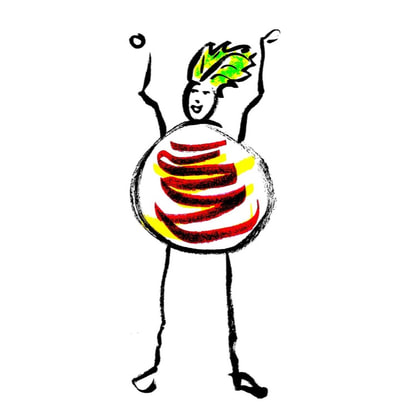 Many great Bordeaux wines are full-bodied personalities with nuanced, complex flavors and a long finish. Many great Bordeaux wines are full-bodied personalities with nuanced, complex flavors and a long finish. Most wines are of a medium body. Our reflections today, however, deal with opposite ends of the spectrum: lean, dancing-on-the-tongue, light-bodied wines verses rich, full-bodied examples. One is a ballet star, the other, a sumo wrestler. Do you have a favorite? In the world of light- verses full-bodied wines, one is not better than the other. They simply offer different experiences. Many of the world’s greatest wines, such as high-quality Bordeaux examples, are full-bodied personalities that deliver nuanced, complex flavors and a long finish. You think of these full-bodied wines, many of them primarily composed of Cabernet Sauvignon and Merlot, as having the stuffing needed for aging gracefully (medium to high alcohol, tannins, fruit concentration, etc.). Northeast of Bordeaux are the great reds of Burgundy, focused on Pinot Noir. These wines show off a completely different body type: lithe, light, and just as nuanced and complex as their Bordelaise counterparts. To understand the difference between full-bodied and light-bodied wines, think about the difference between whole milk and skim milk. It is a matter of viscosity. A full-bodied wine has weight and texture in the mouth. We tend to drink full-bodied wines more slowly, possibly because the mouthfeel captures our attention or the mechanics of drinking a full-bodied wine are more complex than those of light-bodied quaffs. Rich, full-bodied wines are especially attractive in the winter and with heartier meals, such as roast beef, while lean, delicate wines are just the ticket for lighter fare, such as red snapper with lemon slices and herbs baked in parchment packets, served in the heat of summer on a deck overlooking the ocean. Not surprisingly, there are exceptions to these commonly accepted pairing guidelines. For instance, some crisp and lean whites, such as dry Rieslings from Australia, with their dancing acidity, can work well to cut through the fats of heavy meals, even steak. That type of match is unconventional, but if it pleases your palate, who’s to say it is wrong? As a winemaker, I have found that it takes more skill to make a top-quality light-bodied wine than a full-bodied one. Grapes used for full-bodied wines are typically bursting with concentrated fruit flavors, with the reds often sporting a dash of spice from time in oak as well as firm tannins. These bold, beefy wines interact with your palate at full volume, with the possibility of masking flaws such as smoke taint, Brettanomyces or volatile acidity. Makers of light-bodied wines have no place to hide such flaws. A lean wine can also have concentrated fruit flavors, spice, and tannins, but because it lacks the “clothing” of a much richer wine, you can more easily unveil its secrets. Light wines are naked to your observation, broadcasting the quality of the grapes, vintage vagaries, mistakes made in the cellar by the winemaker, or poor storage issues. Winemakers can increase the body of any wine, red or white, through oak aging, fortification, back-sweetening and other production techniques. Conversely, a wine’s body can be lightened through fermentation practices, adding water or other liquids, and blending. A lean wine can also have concentrated fruit flavors, spice, and tannins, but because it lacks the “clothing” of a much richer wine, you can more easily unveil its secrets. When you are in the mood for a full-bodied wine, you might first think of reaching for a red. Inky reds set the tone for a brooding drink as you cozy up to the fireplace to discuss your world domination plans with a respected mentor. However, you might be selling yourself short if you neglect to consider a full-bodied white. Certain white varieties, such as Viognier and Marsanne, have characteristics that lend themselves to the production of rich and lush wines that are ideal for heavier meals and conversations. When the winemaker has the budget and time, a white can achieve further richness through techniques in the cellar that might include letting the wine rest on lees (spent yeast), barrel fermentation, oak aging, malolactic fermentation, and skin contact (the making of a white wine usually involves separating the skins from the grape immediately after harvesting; leaving the skins on for some degree of time adds texture). 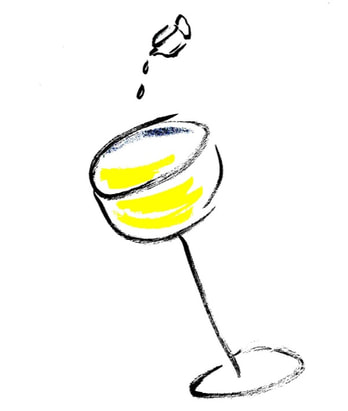 White wines that have gone through malo often emit dairy aromas such as cream or butter. White wines that have gone through malo often emit dairy aromas such as cream or butter. Malolactic fermentation (malo) is a process where a wine’s tart malic acid is converted to softer, creamier lactic acid, resulting in a more rounded, full and mellow texture in the mouth. Malo occurs in most reds, taming the astringency of the tannins, and in some whites. White wines that have gone through malo often emit dairy aromas such as butter or cream, with an iconic example being a classic Napa Valley Chardonnay. Winemakers who want a leaner, crisper style of white, such as a New Zealand Sauvignon Blanc, block malo by using sulfur dioxide or by cooling down the wine to around fifty degrees. The bottom line: malo fills out and mellows a wine, and this certainly affects our perception of body type. My personal selection of a wine, light- or heavy-bodied (or anywhere in-between), depends on the situation at hand. The selection of a wine can involve creativity, practicality, and strategy. Select the best bottle to convey the mood and scenario, much like a lighting director might use her creative talents to help a film director tell a compelling story. Recently a good friend called to tell me she had lost her beloved family dog and was hoping for some company. Which bottle would you have under arm for this delicate situation? Please allow me to escort you at this very moment to my cellar and we will make our selection. Oh, are you surprised to see that my “cellar” is actually an under-the-counter wine fridge in the kitchen that is always crammed full? Do we choose that Vino Rosato by Andrea Scovero on the top shelf? No . . . too light for the occasion. Let’s reach instead to the lower shelf for the 2019 Provins “Chandra Kurt” Cornalin from Valais, Switzerland. This is a rich, aromatic, fruity and juicy red with a kiss of bitterness at the finish. See that bottle right next to the Cornalin? Grab it also, please. This is a 2019 Ciro Picariello Fiano di Avellino. It should be just right if my friend prefers a white. Some people only drink white wine during the day; it conforms with their vision of propriety. Perhaps my friend fits into that category, now that I think back to our past wine adventures, and I like to be ready for anything. Many people drink exclusively reds or whites, passing up the opportunity to enjoy the full spectrum of what wine has to offer. What a shame. People often ask me to name my favorite type of wine, to which I answer, “They are all my children, I love them equally.” In any case, we are fully prepared with these beautiful specimens. What causes a full or light body? The amount of alcohol in the wine is one key indicator of a wine’s body. Wines with up to twelve-and-a-half percent alcohol by volume are generally considered to be light-bodied. Medium-bodied wines, which are not covered in this list, are generally between twelve-and-a-half to thirteen-and-a-half percent alcohol. Wines with high alcohol levels, those at fourteen percent and above, are full-bodied, and that would be another reason why we tend to drink these wines more slowly than their lighter counterparts. The amount of alcohol in a wine does not, in all cases, indicate the body type. A sweet wine such as a Canadian Icewine or a German Beerenauslese can be low in alcohol (as low as seven percent) yet full-bodied because fermentation was halted by the winemaker before the yeast could eat all the sugars. In that case, the yeast did not convert all of the sugars into alcohol, leaving the wine sweet with residual (leftover, unfermented) sugars to produce a wine that is rich and full-bodied. In our Canadian and German examples, the body type is trickier to identify strictly by the alcohol level; we rely more on a wine’s texture in the mouth rather than the alcohol to give a precise assessment of the body. Sugar adds to our impression of body while acidity lightens up our feel. There is yet another naturally occurring chemical that affects our perception of a wine’s texture, mouthfeel and body: glycerol, also known as glycerine. When the yeast goes to work during fermentation, mostly producing ethanol and carbon dioxide, glycerol is next in line in terms of output. It is colorless and odorless but enhances a wine’s quality and sensory properties by contributing elements of sweetness and fullness. The amount of glycerol produced depends upon the yeast strain, the amount of sugar in the must (unfermented grapes), the grape varietal, and the ripeness of the grapes, among other things. If you would like to experience higher than normal glycerol levels in a wine, try Amarone, produced in Italy’s Veneto region, where glycerol contributes a splendid perception of sweetness and fullness even if the wine finishes dry. 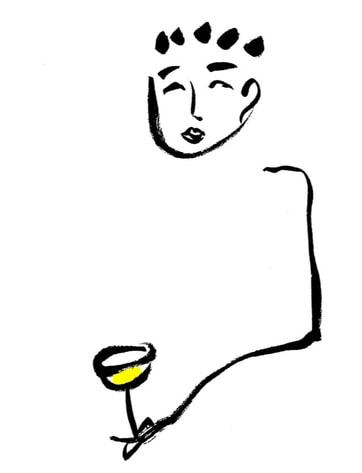 Some people only drink white wine during the day; it conforms with their vision of propriety. Some people only drink white wine during the day; it conforms with their vision of propriety. A region’s climate can provide you with possible indicators of a wine’s body. Grapes need warmth and sunlight in the vineyard, among other factors, to convert their sugars into alcohol. Grapes grown in a more northerly latitude (or at a higher altitude) struggle to obtain ripeness as they must deal with cooler weather, overcast days and weaker sunlight. Examples of cool weather regions include Champagne, France; Wachau, Austria and Valais, Switzerland. When grapes skirt the edge of ripeness, they reach lower sugar levels which translates to less alcohol and a corresponding leaner body. In some cases, grape varieties structure themselves to adapt to cool climates by developing thinner skins to soak up as much sun as possible inside the grape to advance ripening. These grapes typically have lower alcohol levels, lighter tannins, and more acidity, all hallmarks of light-bodied wines. Tannins contribute to our perception of body, and in cool climates, grapes struggle to fully develop tannins. (Underripe tannins can make a wine taste green, sour or astringent.) Grapes grown in areas blessed with sunlight and warmth have no problem ripening. They easily convert the grape’s sugars to high alcohol levels and therefore lower acidity. Tannins will develop fully, paving the way for the production of wines with a full and generous body. Wine regions with Mediterranean climates such as France’s Languedoc, Sardinia’s Gallura, and California’s Napa Valley come to mind. In such climates, grapes need protection from the heat of the sun to avoid over-ripening and shriveling on the vine. Grapes that get too ripe usually produce wines that are very high in alcohol with overly jammy flavors and possibly a flabby mouthfeel. Some varieties adapt to the heat by growing thicker skins to prevent sunburn, and thicker skins contribute to a sensation of body in the mouth in the form of robust tannins. Several grape varieties are elastic in personality, such as Zinfandel, Chardonnay, Chenin Blanc, and Riesling, and lend themselves to production in multiple body classes. What’s more, a winemaker can elect to use a grape variety that is typically made in a lean style and go the opposite direction, pushing for a fuller style, or the other way around. An example of this is Picpoul de Pinet, which is usually produced in a light, zippy style. As this grape varietal grows in popularity, winemakers in France, California and Texas are employing production methods such as barrel fermentation to broaden the flavor profile and body. Light-Bodied Varieties Whites: Albariño Aligoté Chardonnay (Chablis) Chasselas Cortese Dafni Friulano Garganega (Soave and Gambellara) Grenache Blanc Grüner Veltliner Loureiro Melon de Bourgogne (Muscadet) Moschofilero Müller-Thurgau Muscat Blanc/Moscato Picpoul de Pinet Pinot Blanc Pinot Grigio/Pinot Gris Reisling (Mosel) Sauvignon Blanc Verdicchio Xarel-lo Reds: Blaufränkisch/Lemberger Cinsaut/Cinsault Corvina Counoise Frappato Gamay Pinotage Pinot Noir Poulsard/Ploussard Primitivo/Zinfandel Schiava St. Laurent Zweigelt Full-Bodied Varieties Whites: Arneis Assyrtiko Chardonnay (Napa Valley) Coda di Volpe Fiano Gewürztraminer Godello Greco Grenache Blanc Kerner Marsanne Petit Manseng Roussanne Sémillon/Semillon Silvaner/Sylvaner Timorasso Verdejo Viognier Reds: Aglianico Cabernet Sauvignon Carménère Cornalin Garnacha/Grenache Lagrein Malbec Merlot Mourvèdre/Mataro/Monastrell Nebbiolo Negroamaro Nero D’Avola Petite Sirah Petit Verdot Refosco (Colli Orientali) Regent Ruchè Susumaniello Syrah/Shiraz Tannat Touriga Nacional This is one in a series of Grape Detective blogs featuring the attributes of wine and how your love for a specific wine grape may lead you to discover new grapes with similar characteristics. The focus of the list is grape variety and does not include blends, wine regions, or styles. 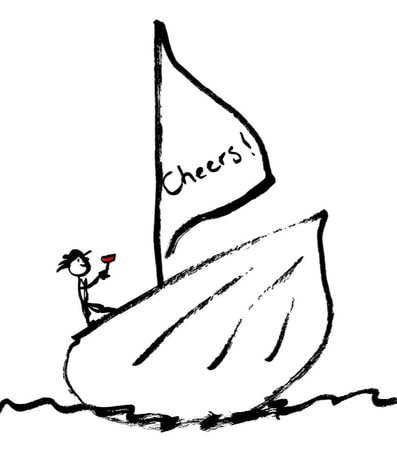 You are the captain of your drinking ship. You are the captain of your drinking ship. Would you say weather plays an important role in setting the tone for your choice of an earthy or fruity wine? For instance, here in San Francisco, we are experiencing twenty-five-mile-an-hour winds and, for some, subsequent power outages. I can tell you that my run at forty-three degrees Fahrenheit this morning in Golden Gate Park was nothing short of invigorating. Peter called out “good luck” as I leapt forth into the wild outside. I had a psychological advantage, though: friends had sent photos of themselves enjoying time with their families in several feet of snow. That’s why today’s run was totally in my wheelhouse. Tonight the wine will be a nice earthy red, maybe a Nero d’Avola, to keep a late winter’s brisk weather at bay. A quick look into the wine fridge reveals the perfect candidate: a 2017 Cerasuolo di Vittoria by Donnafugata, a spicy blend of Nero d’Avola and Frapatto out of Sicily. As we are having this conversation, I have been deciding whether to cook tonight’s Halloumi cheese over vegetables in the pizza oven outside as planned or pay my due respects to the gusty winds and cook a traditional red-sauce pasta indoors. While I am leaning toward the pasta dinner as a matter of practicality (pizza ovens are not keen on inhaling blustery winds), if we lose electricity like some of our San Francisco sisters and brothers, the decision will be made for me. Cooking outside with fire is my favorite, wind be damned. Either scenario bodes well for the Cerasuolo and the dinner. On a different day, one where I have been in the backyard laying in the warm sun reading a good detective story, I might pick a different Italian offering: a fruity Schiava, perhaps. The light-bodied 2019 by Manincor from Italy’s Alto Adige, also in the wine fridge, would be a perfect pairing for a warm easygoing day. Choosing an earthy or fruity wine can also depend on the course of your dinner and what you are serving. With a Caesar salad, will you opt for the floral, white peach and lemon zest aromas of a Torrentés from Argentina to marry with the zing of the salad’s Dijon mustard and anchovy? Or do you favor the more earthy, grassy experience offered by a Sauvignon Blanc from the Nelson region of New Zealand to complement the crunchy freshness of romaine lettuce? 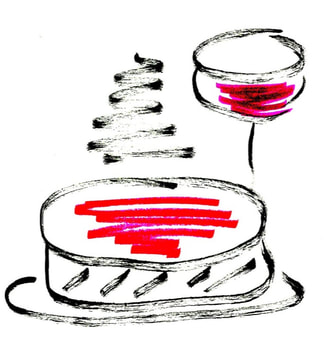 Consider an earthy Merlot from the Walla Walla Valley wine region to pair with a tomato soup. Consider an earthy Merlot from the Walla Walla Valley wine region to pair with a tomato soup. For a steaming bowl of tomato soup, do you go with an earthy Merlot from the Walla Walla Valley wine region to make the most of the tomatoes’ savory dirt elements? If the tomato soup is, in fact, a chilled gazpacho, would you instead reach for a fruity Godello to play nicely with the acidic elements of the soup? When grilling lamb chops for your main course, you could reach for the dark plum and fig fruit flavors of a Bobal from the Utiel-Requena wine region of Valencia in Spain to offset the lamb’s gamey, ashy flavors. For a more earthy, brooding wine to accompany the grilled lamb, drink a Sagrantino di Montefalco for the black fruit, licorice and pine tar that it brings to the table. For a cheese course, do you want a fruity and versatile Chenin Blanc or a more savory yet equally versatile Roussanne? As the captain of your drinking ship, you can have fun alternating between fruity and earthy wines, even within the same course, and explore the differences. Earthy wines have aromas and flavors evocative of the earth and often have savory characteristics. You might get mushrooms, vegetation, soil, wet leaves, rocks, game, minerals, leather, or tobacco from these wines. Time in oak, wine aged sur lie (kept in contact with spent yeast cells), bottle aging, oxidation, fermentation practices and environments, and other factors affect the perceived earthiness of a wine. The vineyard’s terroir has a tremendous impact on a wine’s earthiness. For instance, red wines produced from iron-rich clay soils sometimes deliver a mild yet surprisingly pleasant bloody note. If you pick up smokey or ashy elements from a wine, you might be right to suspect that the grapes were grown in volcanic soils. The use of wild yeast, commercial yeast, or a combination of both during fermentation also inform a wine’s earthy qualities. Biodynamic, organic and natural winemakers promote a minimalist approach to winemaking, and many opt to use the wild yeast that naturally occurs in the vineyard and cellar environments rather than rely on a commercial laboratory to supply yeast that has been propagated to produce a reliable outcome. Natural winemakers, as well as traditional winemakers who use natural yeast, claim that their use of indigenous (wild) yeast promotes a more complex flavor profile. These winemakers know they are taking a chance that the environment will also provide unwanted spoilage bacteria, so sanitation becomes even more important than usual. Winemakers who rely entirely on natural yeast can choose to mitigate their risk by adding a small amount of sulfites to kill harmful bacteria and to stabilize the wine. If you are a winemaker who elects to use commercial yeast, you are in the composer’s seat, choosing from a library of offerings with qualities that go well beyond earthy or fruity. Several of my friends allow the natural yeast to do their work for a day or two, then add commercial yeast to clean up any possible undesirable bad actors that could ruin the beverage. Yeast is highly complex and fascinating and scientists admit they do not fully understand everything that is happening during the fermentation process. As a homebrewer, I enjoy playing with various approaches, whether it is going completely natural, mixing a combination of commercial yeasts, or starting wild then tempering the fermentation with commercial yeast. If I had shareholders to please, my choices would be much more restricted. Additional factors affect a wine’s earthiness. Grapes grown in cooler climates such as Burgundy, France and Italy’s Trentino-Alto Adige do not achieve the sugar levels enjoyed in warm climates with intense sunshine such as California’s Sacramento Valley and Argentina’s Mendoza Province. Cool-region wines tend to be less fruity, revealing more earthy notes in their flavor profiles. A grape’s ripeness level has a tremendous influence on earthy vs. fruity aromas and flavors. Fully ripe grapes are prone to display fruity characteristics while under-ripe grapes are inclined to offer herbal or vegetal attributes. 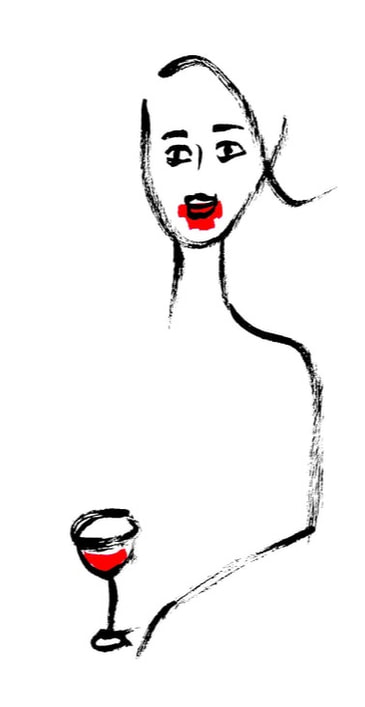 Red wines produced from iron-rich clay soils can deliver a mild yet surprisingly pleasant bloody note. Red wines produced from iron-rich clay soils can deliver a mild yet surprisingly pleasant bloody note. A quality wine can be fruity or savory, and many wines share elements of both. For instance, a Grüner Veltliner from the Wachau region of Austria has citrus and/or stone fruit characteristics that are typically accompanied by the earthy and savory notes of white pepper (and perhaps toast, in those that are aged). Sometimes a wine is aged beyond its prime and displays little to no fruit characteristics. This is considered a flaw because what remains is a mere flavor shadow compared to the wine at its peak. Fruity wines showcase fruit aromas and flavors over and above other aspects. A lot of people associate a fruit-forward wine with sweetness, but many fruity wines actually finish dry. The next time you perceive what you think is sweetness, ask yourself if you are in fact detecting fruit flavors rather than sugar. To distinguish one from the other, pay close attention to the finish of the wine. A wine that finishes dry, even if you experience delightfully bright red fruit such as raspberries and cherries, is considered to be a dry wine. Some winemakers go to great lengths to preserve the fresh fruit purity of their wine by fermenting and aging the wine in stainless steel, concrete or other air-tight vessels instead of oak. This is because oak allows in small amounts of oxygen to change the nature of the finished wine to include non-fruity elements. A lot of people associate a fruit-forward wine with sweetness, but many fruity wines actually finish dry. The next time you perceive what you think is sweetness, ask yourself if you are in fact detecting fruit flavors rather than sugar. To distinguish one from the other, pay close attention to the finish of the wine. Fruitiness is often associated with New World wines (North and South America, Australia and New Zealand, South Africa, etc.). Earthiness is more associated with Old World wines (France, Italy, Germany, Spain, Portugal, etc.). There are many exceptions to this line of thinking, especially as winemakers travel the world to experience wine in other countries and share ideas and technical information. The drinking public also helps shape how wines are made. Styles go in and out of popularity and many winemakers accommodate what is fashionable or risk losing sales. For instance, the majority of buyers today ask for a dry rosé, so producers all around the world create offerings typical of the crisp, pale-colored, light-bodied, dry style of the Côtes de Provence rosés of Southern France. In the past, sweet rosés were all the rage. Drinkers who are new to wine often prefer fruity styles. As their palates mature, these drinkers begin to appreciate the complexity and intrigue of savory elements in the beverage. Oh, for heaven’s sake, rain is suddenly coming down hard. What, is that hail pounding on my skylight? I guess the pasta dinner will be made tonight. Can’t say I’m sorry about that, because now I can rummage through my farmers market finds to create a meal for Peter that will be just right for that Cerasuolo. Soon I will put away the “pen” and enjoy the warmth of a hot stove. I will create a meal that will be the perfect finish to a day that engaged my body with a good run, my mind with this conversation, and my senses with excellent wine. Here’s a toast to being flexible without giving up on what matters in life: good food, good wine, good health and, especially, good company. Earthy Varieties Whites: Sauvignon Blanc Chardonnay (Chablis) Garganega (Soave and Gambellara) Grüner Veltliner Roussanne Savagnin Silvaner/Sylvaner Vermentino Reds: Aglianico Cabernet Franc Cabernet Sauvignon Carménère Corvina Fumin Grenache Malbec Mencía Merlot Mondeuse Noire Mourvèdre/Mataro/Monastrell Nebbiolo Nero d’Avola Piedirosso Pinotage Pinot Noir Poulsard/Ploussard Sagrantino Sangiovese (Chianti Classico) Syrah/Shiraz Tempranillo Trousseau/Bastardo Fruity Varieties Whites: Albariño Chardonnay Chenin Blanc Friulano Gewürztraminer Godello Malvasia Bianca Marsanne Moscato Riesling Torrontés Viognier Reds: Bobal Cornalin Frappato Gamay Garnacha/Grenache Nerello Mascalese Pinot Noir Plavina Schiava St. Laurent Teroldego Valdiguié Zweigelt This is one in a series of Grape Detective blogs featuring the attributes of wine and how your love for a specific wine grape may lead you to discover new grapes with similar characteristics. The focus of the list is grape variety and does not include blends, wine regions, or styles. 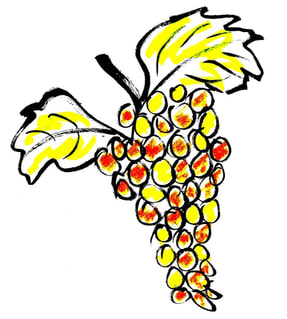 Botrytis or "noble rot" plays a role in making some of the world's finest sweet wines. Botrytis or "noble rot" plays a role in making some of the world's finest sweet wines. The determination of whether to produce a wine that is dry, sweet, or somewhere in-between is made when the winemaker designs the wine and determines the process. When I get the urge to make wine, I think about the possibilities, including grape variety, the attributes of the vineyard, yeast selection (shall I go with commercial yeast or wild?), fermentation approach, equipment to be used, and, of course, sweetness level. I typically elect to make a dry wine, but even then, it is not just a matter of reading sweetness levels on a refractometer to determine when the wine has completed fermentation. When it comes to determining sweetness, I have a broad idea in mind. For instance, when I have determined that I want to make a dry wine, I check the wine throughout the fermentation process, not only using tools to monitor the wine’s progress but also by tasting the wine. By sampling the wine as it develops, I can identify the sweet spot, or perfect moment, to halt fermentation. If I halt it too soon, the wine will be sweeter than I intended. If I halt fermentation too late, the wine, while dry, will seem thin and lacking in character. There are no hard-and-fast rules that dictate fermentation timeframes. Each batch is unique, so I mother my fermentations, carefully overseeing each and every aspect of the development of the wine. And, that my friend, is only one of many reasons why making wine is such a hands-on, personal experience. Some winemakers, when preparing to make wine, have no choice in the matter of sweetness level. An example of this would be if the winemaker is told to work within an established brand or house style so that he can ensure the consistency that his shareholders and consumers have come to expect. Even when a sweetness level has been decided upon, there is a range of the amount of sugar that you will find in the wine. Generally, a dry wine will have less than ten grams per liter of wine. That means you could find nine grams per liter in one dry wine and three grams in another, even though both fall within the dry wine parameter. Sweet wines, the type you would consider dessert wines, often have over thirty grams per liter. There are many wines that fall somewhere between the dry and sweet levels. Most winemakers do not include nutritional information on their labels, though some do. This puts us all in the position of either tasting the wine for ourselves to assess sweetness or relying on a guide, such as a sommelier or retailer, to give us a feel for the level of sweetness. Also, certain regions, grapes and wine styles are typically expected to be dry or sweet. For instance, if you are buying a Moscato, you are shopping for a sweet wine. If you buy a Barolo, you would be very surprised if it was sweet unless you were buying it in spirits form such as a Chinato. I was having a conversation with a French winemaker recently and he described the American palate as being drawn to bigger, sweeter Bordeaux style blends rather than the dryer, more austere wines that the French are known to cherish. I had to concede that wines from the Napa Valley and other warm regions in the States tend to be made with riper fruit and therefore have more perceived sweetness, higher alcohol levels and a bigger body than several French wines. Many American winemakers, however, are following a trend toward less sweet, lower alcohol wines by selecting cooler grape growing sites, canopy management, picking grapes before they get overripe, and steering fermentations precisely. This trend has also been going on in recent years in other countries, such as Spain and Argentina, who have a past reputation for big, oaky, alcoholic wines that tend to be sweeter than those of the French. The sweetness level refers to the amount of residual sugar that remains in the wine after fermentation. A wine’s sweetness level starts in the vineyard, where every vintage has something different to offer in terms of the amount of rainfall and wind, sunshine and heat, and other variables. One of the most important decisions made by the winemaker is when to pick the grapes. If too soon, the wine may taste undeveloped or a bit green. Too late and the wine may be overly rich and alcoholic and sweet. Each vintage has something very different to offer, especially in regions with continental climates, and that is why serious wine buyers pay especially close attention to not only the producer and type of wine but the year of the harvest as well. Once the grapes are brought into the cellar, the winemaker with the intent of producing a dry wine establishes ideal conditions for the yeast to actively feast on grape sugars. During fermentation, a happy, healthy yeast colony converts the sugars into, mostly, alcohol and carbon dioxide. This typically leaves very little residual sugar in the wine. To produce a sweet wine, the winemaker halts fermentation before the yeast can convert all of the sugars into alcohol and carbon dioxide. The winemaker has several choices for halting the fermentation, and this basically means that her intent is to kill the yeast colony so it is no longer productive. She can chill the wine, add sulfites or other additives such as grape spirits, or filter the wine, or a combination of techniques. Wine can also be made sweet by adding a sweetener, such as unfermented grape juice, after fermentation and stabilization. This process is known as backsweetening. When I was explaining the process of driving the sweetness level in a wine to a crowd, someone asked, “If you want to make a sweet wine, why add yeast at all? Then you won’t have to kill the yeast to stop them from eating the sugars.” My answer: grapes, apples, and other fruit have naturally occurring yeast on their skins and other parts, so one way or another, you will have yeast present. When you add commercial yeast to grape juice, it overtakes the wild yeast during fermentation to produce wine that is more stable and offers more predictable outcomes. If you were on a planet where no yeast naturally occurred on fruit and you added no commercial yeast, you would not have alcohol, you would simply have grape juice, because the work of the yeast would not take place. The grape juice you see on the shelf at the grocery store has been stabilized so it does not allow fermentation, and therefore alcohol, to occur. Sweet wine production starts in the vineyard, where producers grow grapes that are naturally high in sugar and farm them in a way that will concentrate the sugars. Some sweet wine grapes are purposely allowed to become “infected” in the vineyard by a fungus known as Botrytis cinerea or noble rot. Some of the world’s finest sweet wines, such as those produced in the Sauternes region of Bordeaux, capitalize on the help of noble rot to concentrate the finished wine’s acids, flavors and sweetness. While the idea of allowing something to rot may seem off-putting in the world of wine and food, consider that the art of cheesemaking is a process of controlled spoilage. Do you think twice about eating cheese, or yogurt for that matter? Many people are predisposed to preferring either dry or sweet wines, but both hold a special place at the dinner table. Just the other night Peter and I were at a lovely restaurant in La Jolla, California, and when it was time for dessert, I opted for a sweet wine from vineyards in the Montilla-Moriles wine region in Southern Spain in lieu of the pastry offerings. The Alvear Pedro Ximénez Solera 1927 was my dessert, and I was as happy as a cat jawing a fresh-caught mouse. The Alvear winery was founded in 1729, and the family specializes in fortified wines featuring the Pedro Ximénez grape, also known as PX when it is offered as a single varietal. The Solera 1927 is one of the world’s best PX wines. It is made using a solera system that was built in 1927, and hence the name of the wine. Solera is a system for blending and aging wine, beer, brandy, vinegar or other liquids so that the finished product integrates the various ages. The moment I laid my eyes on the dessert wine menu and found this offering, I knew it was going to be something special. And it was, with a full body and rich, complex flavors. Honeyed figs, maple, crushed nuts, and caramel come pleasantly to my memory. If you taste a sweet wine of high quality for the first time, you may be surprised by how fresh and alive it is because the sugar is beautifully balanced by concentrated acidity, flavor and possibly tannins. Any grape variety can be made in either a dry or sweet style, but some varieties are especially versatile and will shine on both ends of the spectrum, such as Chenin Blanc, Sémillon and Riesling. Many sweet white and red wines are blends, such as Tokaji, Port, Sauternes, and Vin Santo Rosso; blends are not included in this list. If you taste a sweet wine of high quality for the first time, you may be surprised by how fresh and alive it is because the sugar is beautifully balanced by concentrated acidity, flavor and possibly tannins. You can develop your ability to determine the sweetness of wine by tasting wines at all sweetness levels and categorizing them in line with what trusted resources say about them. Developing your ability to determine sweetness levels is a fine excuse to spend an afternoon with a knowledgeable friend or mentor, tasting through various wines and labelling them as dry, off-dry or sweet. I love setting my palate to one of the driest wines available, and that is a Fino Sherry which is made using the Palomino Fino grape. Fino Sherries have a number of yeast strains to create “flor” involved in their production. The flor creates a thick layer on the surface of the wine in the barrel. You also have flor making its way through the body of the wine and providing lees (dead yeast) at the bottom of the barrel. All this chewing and eating by the flor as it lives and dies gives us a unique and ultra-dry wine with a very distinct character. Most wines enjoyed after a glass of Fino Sherry quickly reveal their level of sweetness. When determining the sweetness level, keep in mind that residual sugar is only one component of the wine. Perceived sweetness is what we are talking about, with factors such as acidity, tannins, fruit concentration and other aspects influencing the final taste. Specific categories exist for the dry to sweet spectrum, such as dry, off-dry, medium-dry, medium-sweet, sweet, and luscious. You do not have to get that fancy or specific, but giving thought to the sweetness level of a wine helps you select wines that are in line with your particular palate. Thoughtful assessment also increases your knowledge and appreciation of wine. Wines that are described as “off-dry” or “semi-dry” fall somewhere in the middle of dry and sweet, finishing with a mild and pleasing sweetness. Since our list does not focus on attributes that fall somewhere in the middle of any spectrum, off-dry/semi-dry wines are not included. Sometimes a wine is not technically sweet but gives you an impression of sweetness because the grapes were picked when they were very ripe. This is common in wine regions with hot climates. Oak barrels can also give the impression of sweetness when you pick up the aromas of vanilla or caramel, for example. While our minds link flavors like ripe fruit and vanilla to sweetness, the finish of the wine in your mouth is the best indicator of the sweetness level. If you are working toward a certification and need to identify the sweetness level in a blind tasting exam, consider what one of my teachers advised the class: most wines are considered to be dry. Dry Varieties Whites: Albariño Arneis Arinto Chenin Blanc (dry) Colombard Cortese (Gavi) Dafni Furmint (dry) Garganega (Soave and Gambellara) Godello Grechetto Grenache Blanc Grillo Grüner Veltliner Macabeo Palomino Fino/Listán Blanco Pinot Grigio Prié Blanc Riesling (dry) Sauvignon Blanc Verdejo Verdicchio Vermentino Viura/Macabeo Torrontés (dry) Trousseau/Bastardo Reds: Aglianico Bobal/Bovale Cabernet Sauvignon (cool climate) Dolcetto Mourvèdre/Mataro/Monastrell Nebbiolo Nero d’Avola Petite Sirah Petit Verdot Pinotage Ruchè Sagrantino Sangiovese Syrah/Shiraz Tannat Tempranillo Touriga Nacional Sweet Varieties Whites: Chenin Blanc (sweet) Gewürztraminer (sweet) La Crescent Muscat Blanc/Moscato (sweet) Pedro Ximénez/PX Petit Manseng (Jurançon, Pacherenc) Riesling (sweet) Sémillon/Semillon (sweet) Silvaner/Sylvaner (sweet) Solaris Zinfandel (white) Reds: Brachetto d’Acqui Muscat (black) Liatiko (sweet version) This is one in a series of Grape Detective blogs featuring the attributes of wine and how your love for a specific wine grape may lead you to discover new grapes with similar characteristics. The focus of the list is grape variety and does not include blends, wine regions, or styles. 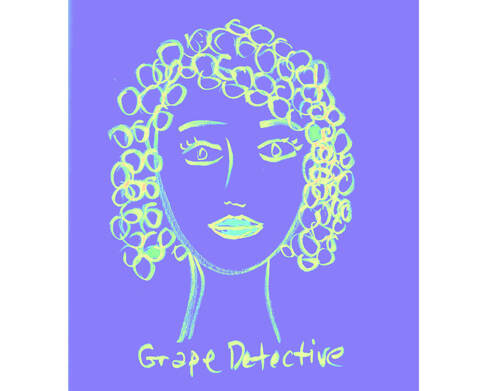 Grape Detective: an upcoming certification? Grape Detective: an upcoming certification? Peter and I have been watching a lot of crime dramas lately, the type of detective series you find on HBO and Netflix any night of the week. The main characters pound down Jack Daniel’s before, during and after work while looking for patterns and connections to pull together their thinking regarding a crime. Maybe if the detectives drank wine instead of whiskey, they would solve the case in half the time. But then the series would only last a couple of weeks and we would get less entertainment. So strike that idea. When I am trying to solve the mysteries of wine, I rely on things I have noticed — patterns — to make the connections I need to understand what is in the glass and to find new wines that will delight my palate. Like my colleagues, friends, advisors, and clients who are obsessed with wine, I know that one way to increase my chances of picking a winning bottle is to personally experience and understand the personality and traits of each grape variety. Then I ask myself how each grape’s attributes are similar to or different from other varieties. Clients often ask me to suggest exciting new wines for their consideration. In response, I sometimes introduce grape types that have similar qualities to what they are accustomed to drinking. The conversation goes something like this: “If you like this grape variety, you may also like this wine that is made from a different grape. While the grape is different, it produces a wine that has similar characteristics to what you like.” For instance, if my client likes a full-bodied, creamy Napa Valley Chardonnay, I could introduce a Viognier, which is also full-bodied and typically oak aged with creamy goodness. The Viognier offers intriguing new aromas and flavors for a novel experience yet lives within the comfort zone and preferences of the taster. If a client is excited by Cabernet Sauvignon’s bold tannins, I might pull out a bottle of Nebbiolo which also has a lion's share of tannins. Many times, the grape variety I am introducing is more obscure than the usual Cabernet Sauvignon, Chardonnay, Sauvignon Blanc, Pinot Grigio, Pinot Noir or Syrah. Less well known varieties sometimes cost less than famous grapes at the same quality level and this pleases my clients to no end. The aromas, flavors and mouthfeel of an obscure grape can provide an exotic experience while not breaking the bank. Who can say no to that? As the palates of my clients evolve, we continuously identify the key aspects of the wines they love in order to explore new grape varieties, wine regions, vintages, producers and production techniques. Tasting by grape variety is one of many ways to continuously hone your knowledge of the wines of the world. If you are interested in searching out new wines, determine the characteristics that please you, then find other wines with similar qualities. In other words, find what you like and Switch It Up. Maybe you like spicy red wines so you frequently purchase a Shiraz from Australia’s Barossa Valley wine region or a Syrah from the Northern Rhone. Using this approach, you might swap your usual choice for a Garnacha from Spain’s Priorat region to tap into Garnacha’s spicy aromas and flavors. Perhaps you like your white wines light-bodied, with acidity that practically slaps you in the face, such as you might get with a Sauvignon Blanc from the Marlborough wine region of New Zealand. In that case, you could swap it for a dry, fresh and fruity Chenin Blanc from the Stellenbosch district of South Africa. Chenin Blanc has exceptionally high acidity no matter what the sweetness level. In fact, the longer Chenin stays in your mouth, the more your awareness of its acidity grows until you feel you absolutely must swallow the wine. Now that’s drama! You might be a more low-key type, one who favors wines that are subtle and nuanced, those that do not make a loud statement but have plenty to say. In this case, you might have Pinot Noir in mind, maybe a nice number from Burgundy. A Beaujolais Villages or Cru, made with the Gamay grape, might be your new thrill. Both wines are typically light-bodied and fruity with low tannins, though there are exceptions. If you go in for full-bodied wines that you can practically chew, complete with oak influences, you might be scanning the wine list at your local steak house for a Cabernet Sauvignon from California’s Napa Valley wine region. Ask your server for a Malbec from Argentina’s Uco Valley in lieu of the Cab as they share the qualities you love. The Malbec will have grainier, more rustic tannins than the Cab’s tight tightly woven tannins, providing your mouth with a new thrill of texture. Maybe earlier in the day you were charged with the shopping and your spouse asked you to bring home a sweet Riesling. Keep the marriage exciting by picking up a Moscato from Italy’s Piedmont area to deliver the sweetness. If your partner gets angry that you did not follow directions on the choice of grape, no problem! Just Switch It Up: find a mate with attributes that are more in line with your own preferences. Perhaps you are the type who wants to be as fully in control of your faculties as possible, even when relaxing, so you always drink Pinot Grigio because it is typically low in alcohol. Break out of your rut with a Grüner Veltliner from the Wachau wine region of Austria. You will enjoy a low-alcohol drink with a dash of white pepper stimulus. The Switch It Up approach gives you more confidence and pleasure in buying an unfamiliar wine. It minimizes the number of bottles you wish you had never bought. This method provides a framework for thinking about what you like in sweetness levels, acidity, tannins, and other elements of wine, helping you communicate with sommeliers and others tasked with serving you. If someone hands you a glass of wine and you do not know the variety, you may be able to taste specific qualities, such as acidity or spice, to take a stab at identifying what is in the glass. By comparing and contrasting the aspects of various grape varieties, you elevate your level of wine tasting knowledge. This type of detective work helps you gain a deeper understanding of how a variety’s traits (skin thickness, sugar level, early or late ripening, loose or tight clusters on the vine, proclivity to oxidation, vigor of growth, etc.) affect the wine that is ultimately bottled. Switch It Up will not work in every situation, however. Many wines are produced with a blend of grapes . . . or with no grapes whatsoever. While we are examining the core fruit ingredient in wine, the grape, let us not ignore the fact that wine can be made by fermenting virtually any fruit, including apples, blackberries, blueberries, cherries, pears, peaches, pineapples, plums, raspberries, rhubarb and strawberries, to name a few. Wine can also be made from honey and is known as mead or honey wine. Mead is thought to be the oldest fermented beverage. During medieval times, it was part of the wedding ritual and the celebrations that took place during the honeymoon. Mead holds a special place in my heart and I make this ancient drink throughout the year. Friends have told me they are shocked by the taste of my mead because they were expecting a syrupy sweet, cloying drink. Just this morning, a friend of mine with years of experience making beer was nervous about making his first five-gallon batch of mead because it would be “too heavy and alcoholic.” While I have made full-bodied, semi-sweet meads, most that I make are dry, refreshing and carbonated, just like the beers my friend craves. You see, as the winemaker, I control the sweetness level, body and other elements of the mead. And so can my friend. I like to include the addition of natural flavors like dried berries, hibiscus and other botanicals while creating meads with an alcohol level of around six or seven percent. However, these additions are optional. I use a light hand on flavoring, aiming for elegance and balance, with a tip of the hat to the character of the orange blossom or other honey varieties in the wine. At the heart of the recipe design and fermentation practices, I am aiming for a joyous experience for the drinker. Every autumn, when I lived in Southern California, I joined my San Diego Craft Cider homebrew club to wash, grind, and press apples, then we took home the juice and fermented it to make tasty alcoholic cider. Sometimes I rely on the wild yeast from the apples to ferment the juice. Other times I use commercial yeast from a laboratory, or I opt for a combination of natural and commercial yeasts. Usually the cider is so delicious and nuanced that I do not bother adding flavor ingredients. I just keg the fermented cider, carbonate it and place it in the kegerator for pouring and sharing with friends and family. Join a homebrew club to get in on this type of fun. Homebrew is the best gift I can offer friends while encouraging them to get involved with the fermentation of beverages. It is comforting to have bottles and kegs of mead, wine, cider and beer at home should there be a surprise. You never know when friends or family will drop by for a good chat and a meal. Talking about surprises, we all know that disasters happen. Did you know that you can survive on beer for months if food sources dry up? Of course, without vitamin C, scientists say that scurvy would set in at the two- or three-month mark and we would die in about six months. That is why I also stock up on water and food. Also, scurvy is a rather off-putting look, so dating would be a bit of a challenge, don’t you think? Scurvy is a rather off-putting look, so dating would be a bit of a challenge, don’t you think? When discussing and buying wine, though, most people think about the alcoholic beverage made from grapes. Wine made from grapes is not so exotic that you cannot make it yourself. My first was a Cabernet Franc from the Templeton Gap District of Paso Robles. My next was a Syrah from Valley View Vineyard in the Santa Ynez Valley. I make wine from grapes every year at harvest. You can make white wine, red wine, sparkling wine, rosé . . . pretty much whatever tickles your fancy. Pick out the attributes you like in wine, identify a grape variety, and get started in your search for grapes. Most of the homebrewers I know have homebrew club memberships where, by sharing information and resources, they gain access to any raw materials and equipment needed. These homebrewers start small and learn as they go, increasing their volume and portfolio as they build confidence. Some become professionals, entering a business that is fraught with risk and competition. Others produce their beverages at a very high level, better than most commercial producers, and choose to simply share with friends and family. In most cases, the homebrewer is constantly striving to better understand and improve the many elements involved in making a delicious beverage. Even highly skilled brewers run into problems from time to time, and they call upon the collective braintrust of their homebrew club and other professional brewers to find solutions. When I lived in Los Angeles, I got to know a homebrewer, Mel, who was kind enough to act as a mule for those of us who lived on the west side of Los Angeles. Our homebrew club, the Maltose Falcons, conducts virtual beer tastings on a regular basis. To prepare for the tastings, a few members pick up beers from local breweries, then other members help distribute the beer to members in their neighborhoods. I have picked up beer from Mel twice now, and during that time we have connected on social media. One day he mentioned on a post that he is planning to make wine from grapes because he has seen my process and feels he can do it too. There is a vast community of homebrewers, near and far, physical and virtual, who are generous with information, support, inspiration . . . and drinks. What follows in my new series is not a blind tasting grid. These are the attributes that my clients and I usually address when we are looking to Switch It Up to a new grape variety. I start by asking the taster what he or she likes in a wine beyond the obvious specifications of red, white, rosé, still, sparkling or fortified. The conversation often unfolds in roughly the sequence you will see in the series. This is not a technical list or even a complete list. In this context, you could call it a wine detective’s list. These are questions I routinely run through with clients as we search for the right bottle of wine. Also included are key descriptors voiced by clients, including those who are looking for “earthy” or “silky” or “oaky” wines. The wine varieties in this series are top-of-mind grapes that typically fall under what is described. Add your own varieties to the list as you experience them in your tastings. I have also added less well known grapes that may be intriguing alternatives to what you are drinking currently. Now let’s talk about what is not on the list. Blends are not included. Varieties that fall in the middle of the spectrum for the characteristic being described (such as acidity level) are not listed. Those two exclusions alone eliminate a large number of delicious wines including many Bordeaux reds and whites, Sherry, Port, Champagne and Cava, and much more. The list is by grape variety, such as Riesling, and not necessarily by style, such as sparkling wines or fortified wines. Wines that are described by region are not included, such as Burgundy; rather, the description is by grape. Clearly, finding a new wine depends on much more than grape identification and investigation. Think of these as general guidelines and be aware that each wine varies according to the vineyard, location, vintage, producer and other factors. Acidity, tannins, flavor concentration and other wine attributes differ from region to region or even vineyard to vineyard, for that matter, and there will always be exceptions and surprises. Wine can be made in opposite styles using the same grape, so that’s a curveball you want to be aware of. For example, the Sémillon grape is generally linked with the production of the rich-bodied, low-acid, almost oily wines produced in Bordeaux. However, just a couple of days ago, I drank a Sémillon from the Hunter Valley wine region of Australia. It had a zesty acidity and a light body that made it a perfect summer sipper, much like a Sauvignon Blanc from New Zealand. Based on the Hunter Valley example, I can deduce that the Sémillon grapes were picked young in the vineyard to preserve the acidity and that no oak or malolactic fermentation was involved in the making of the wine, leaving the body lean. These differences in character from the same grape reflect not only the decisions of the vineyard manager and winemaker but also climate and other terroir considerations. Vermentino and Godello grapes are also popularly presented in either a full-bodied, lush and creamy style or a light-bodied, easy drinking style. Chardonnay and Chenin Blanc grapes are so versatile that they are made in the whole spectrum of dry to sweet wines with alcohol levels that go from low to high. Paradoxically, Pinot Noir and Gamay can be categorized as either earthy or fruity. These grapes are naturally fruity, but if they are fermented with stems/whole cluster, they gravitate towards a savory, herbaceous earthiness. An appreciation of wine grapes is so complex as to defy black-and-white comparisons. And yet I cannot resist. So you see, the upcoming series is a fly-by-the-seat-of-your-pants compilation couched in a tight scope. Wine is so nuanced that there is room for a range of perceptions and interpretations. If you research the varieties in this series, it is not unusual to find contradictory information from one expert source to another. Not every wine professional will agree with the grapes listed in this series because there are so many exceptions and possible additions, but you may find it helpful in finding patterns to reduce the mysteries associated with your next wine purchasing adventure. Good hunting! This is the first in a series of Grape Detective blogs featuring the attributes of wine and how your love for a specific wine grape may lead you to discover new ones with similar characteristics. |
AuthorLyne Noella Archives
October 2022
Categories
All
|


 RSS Feed
RSS Feed
